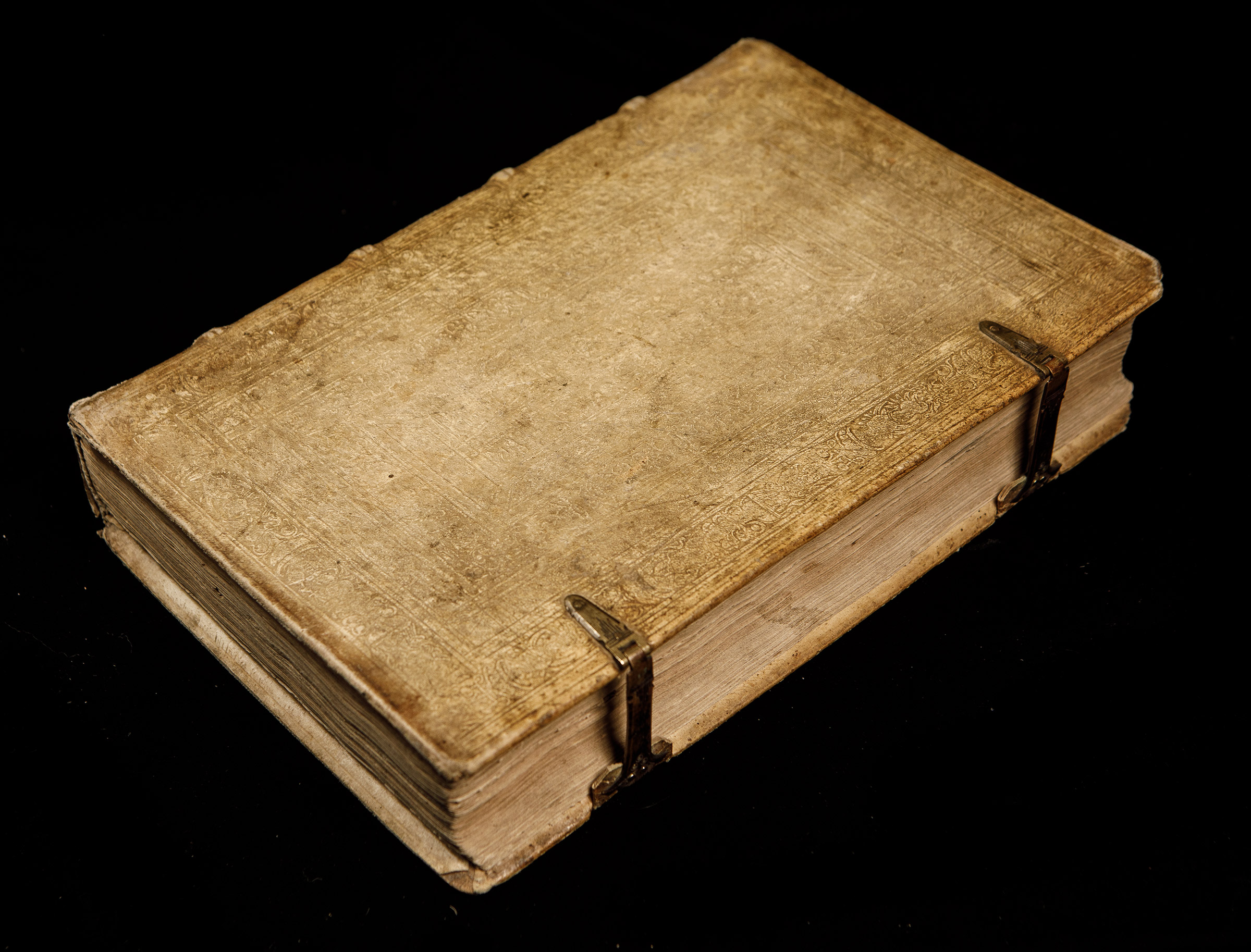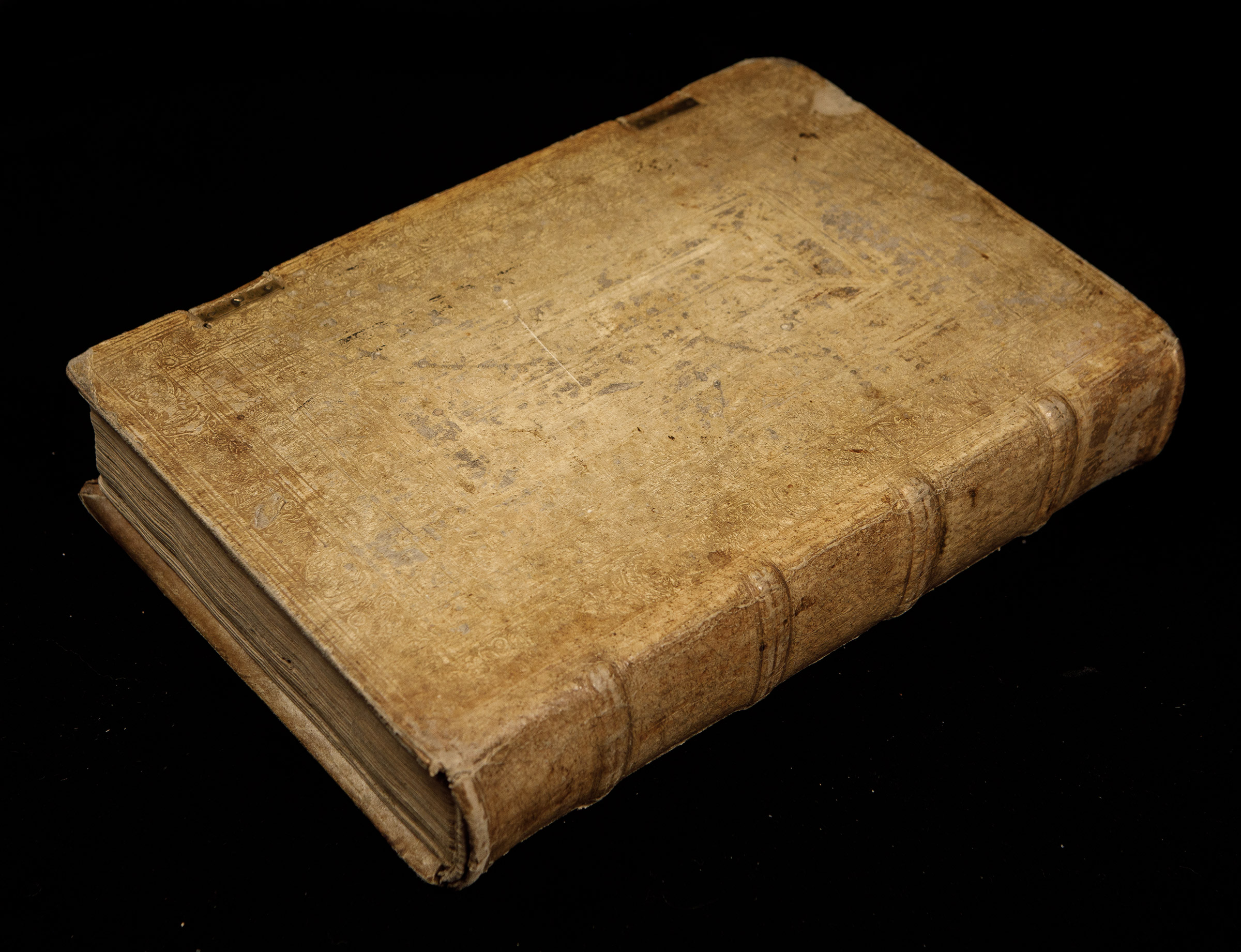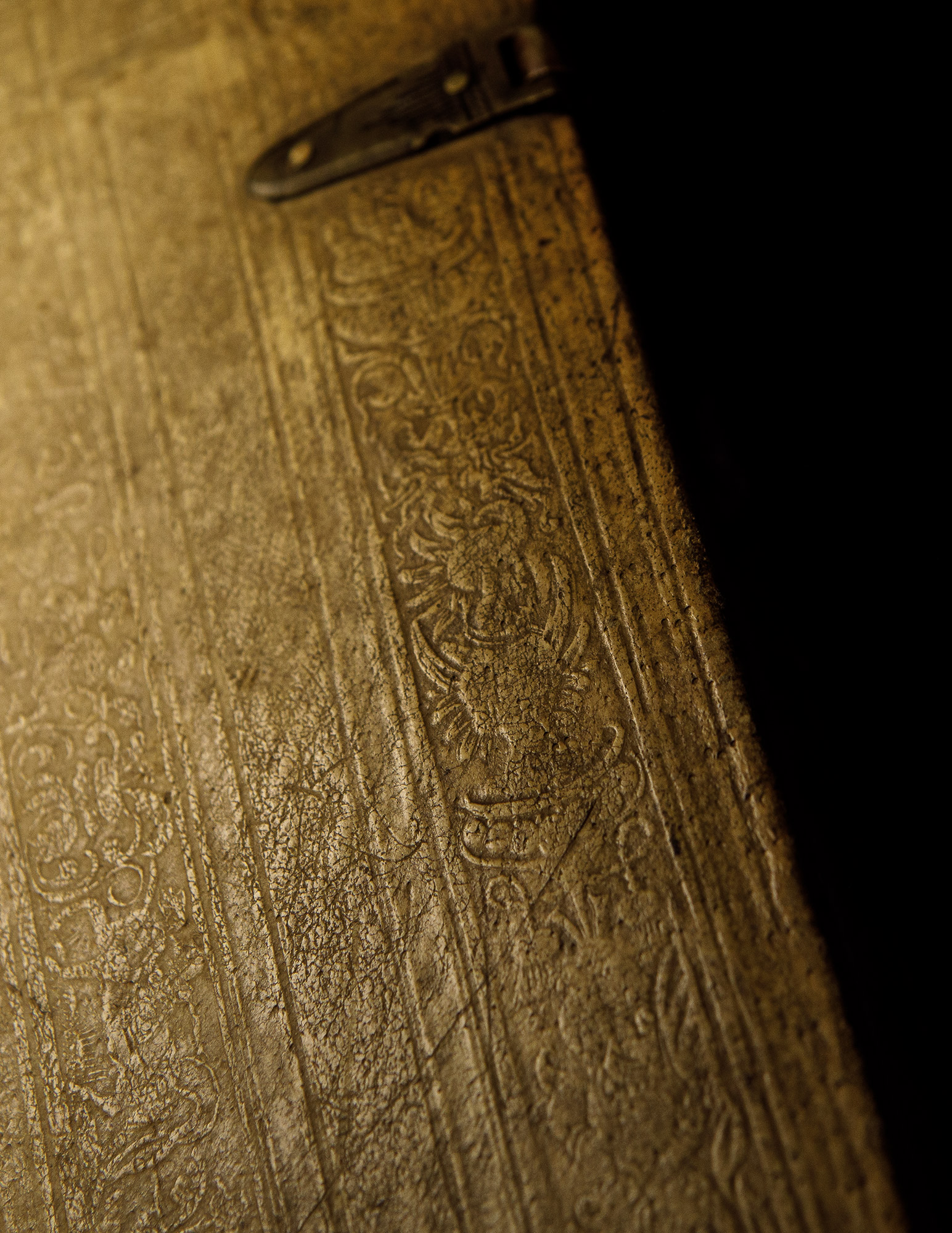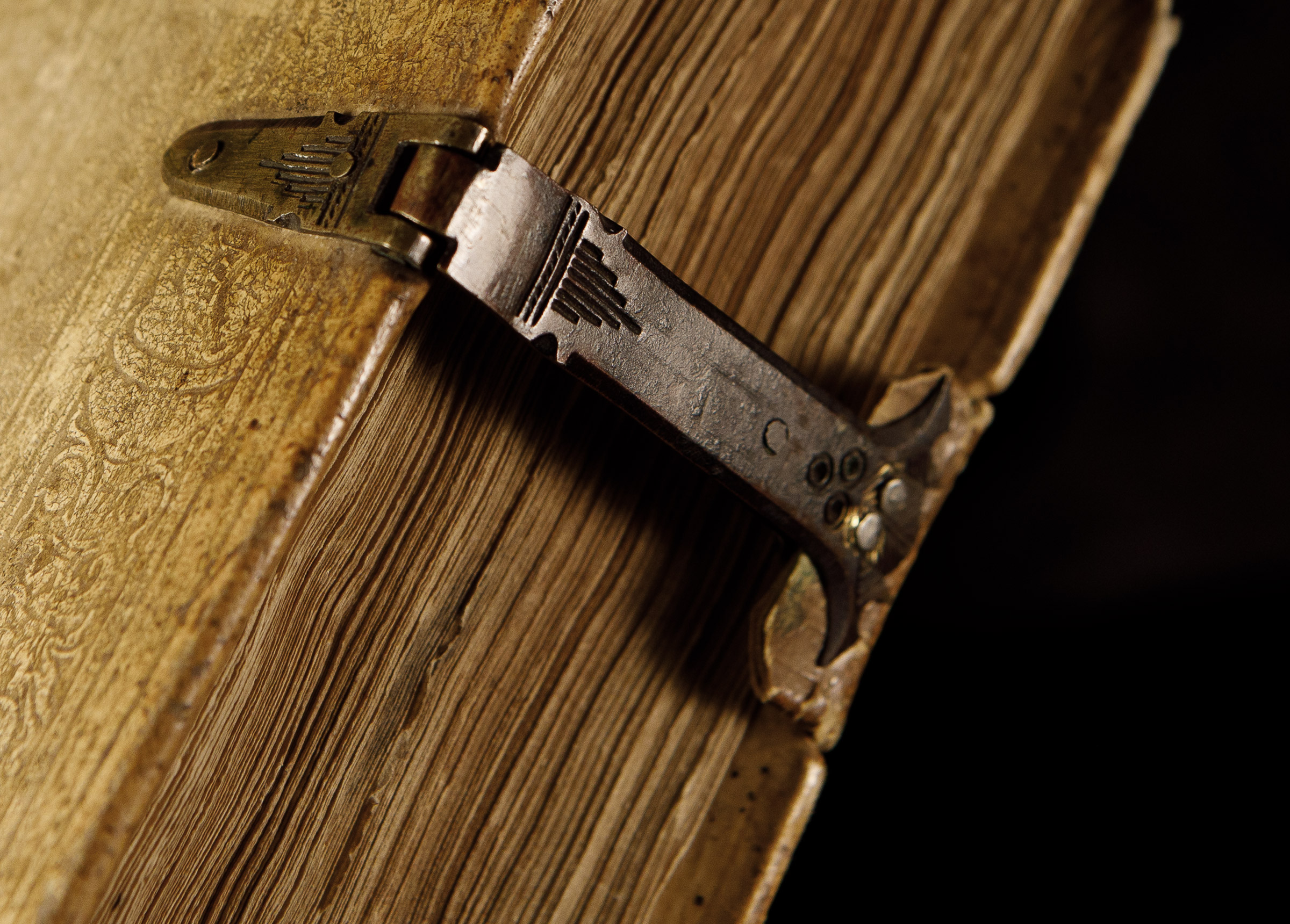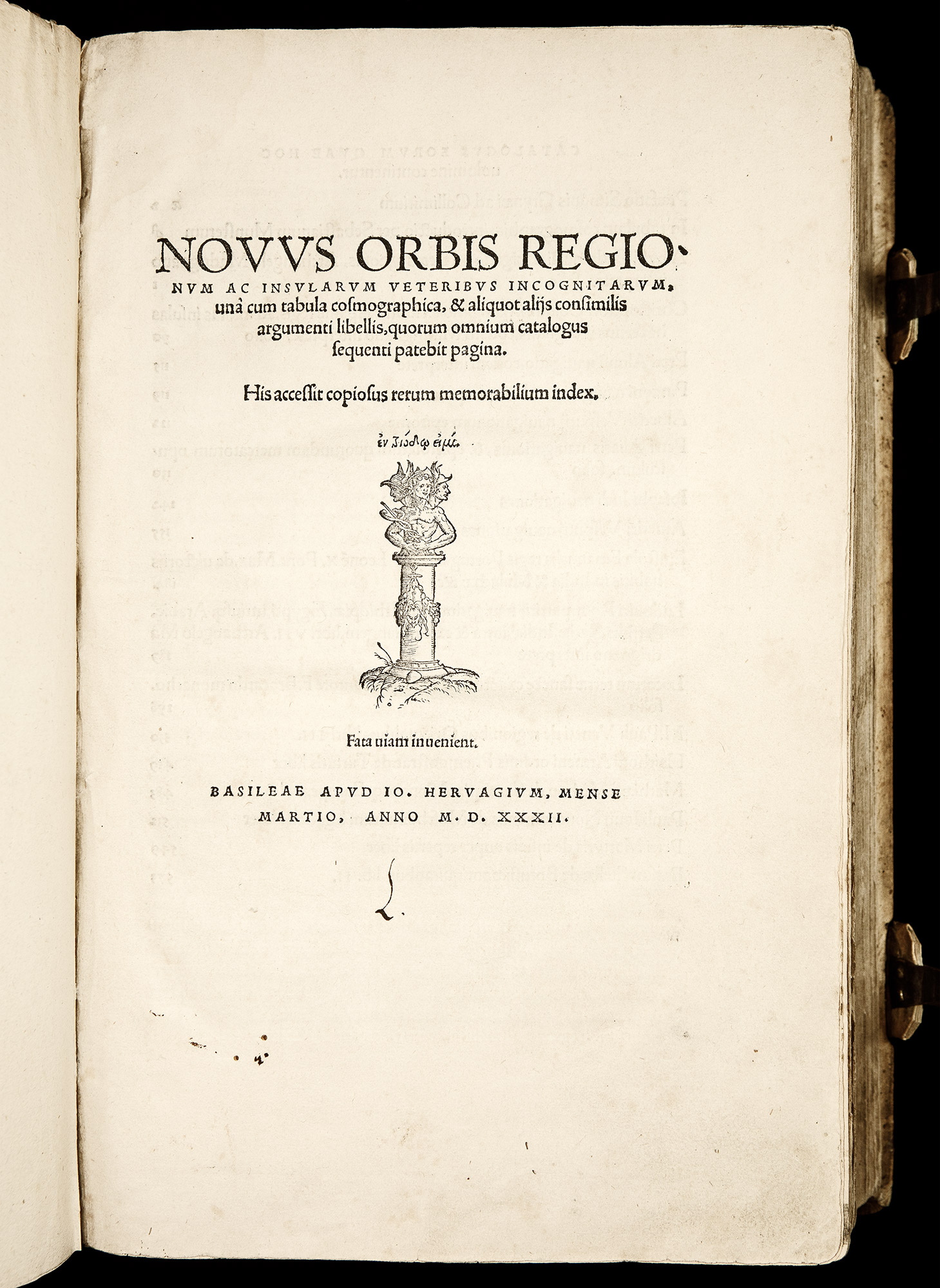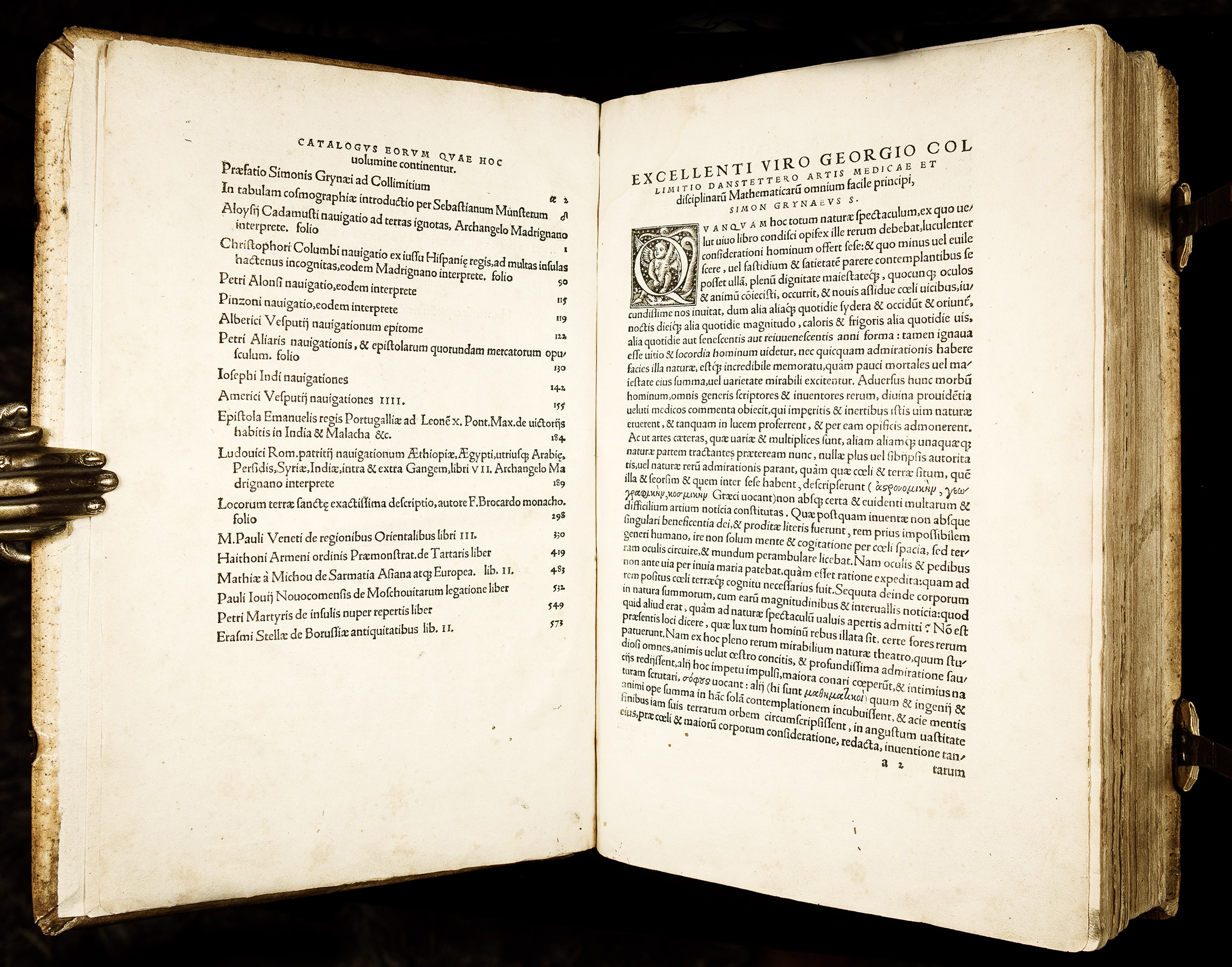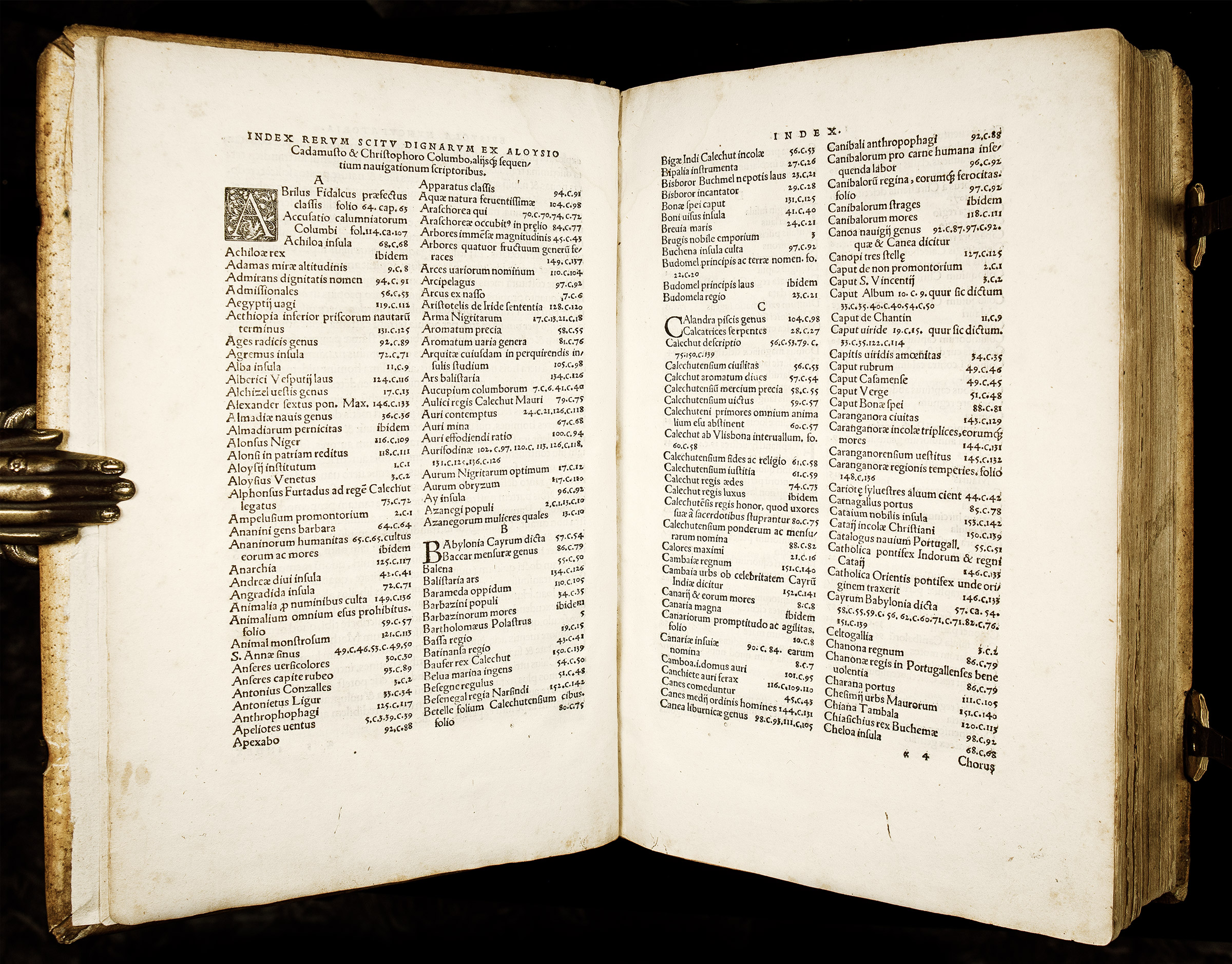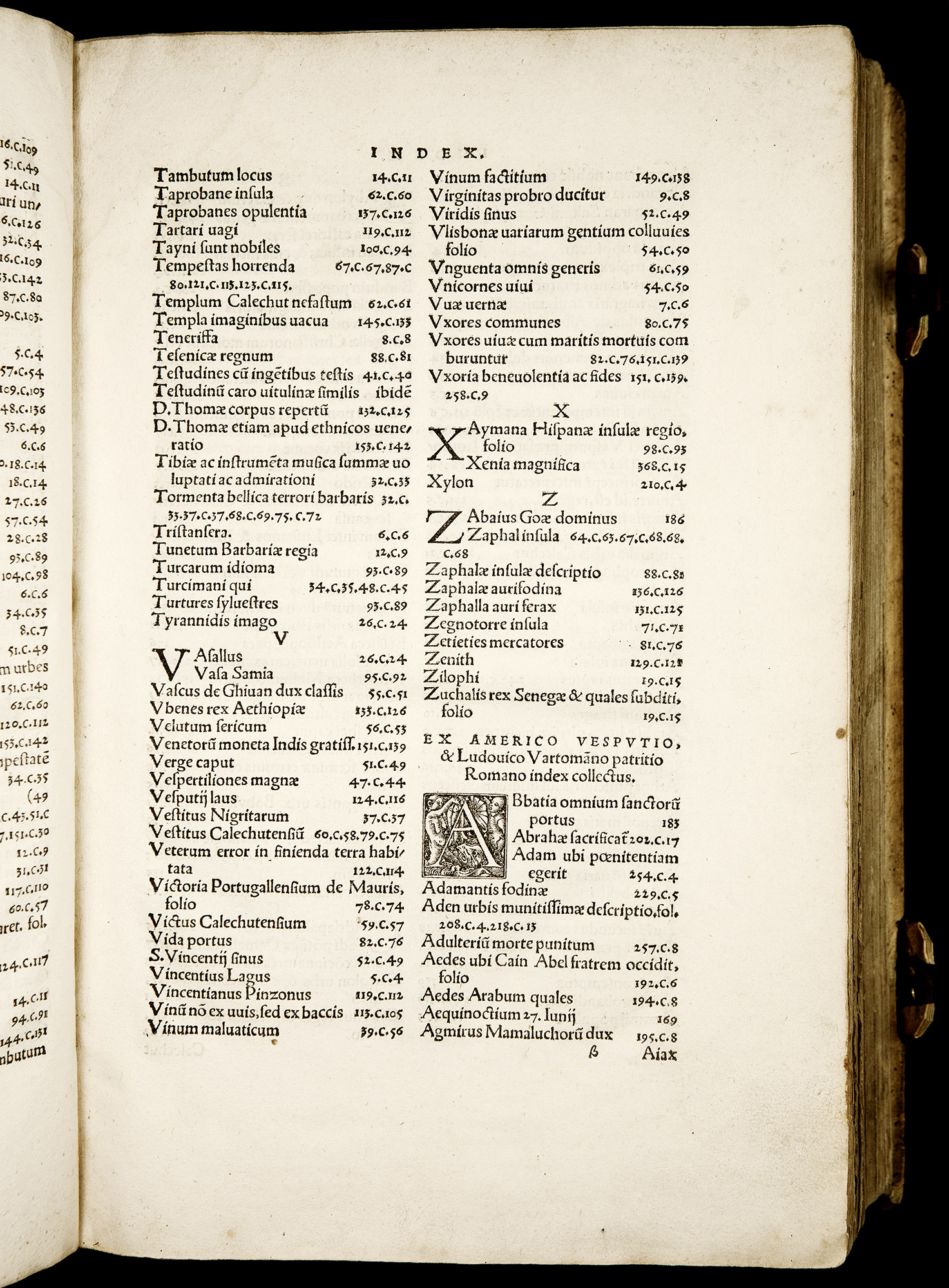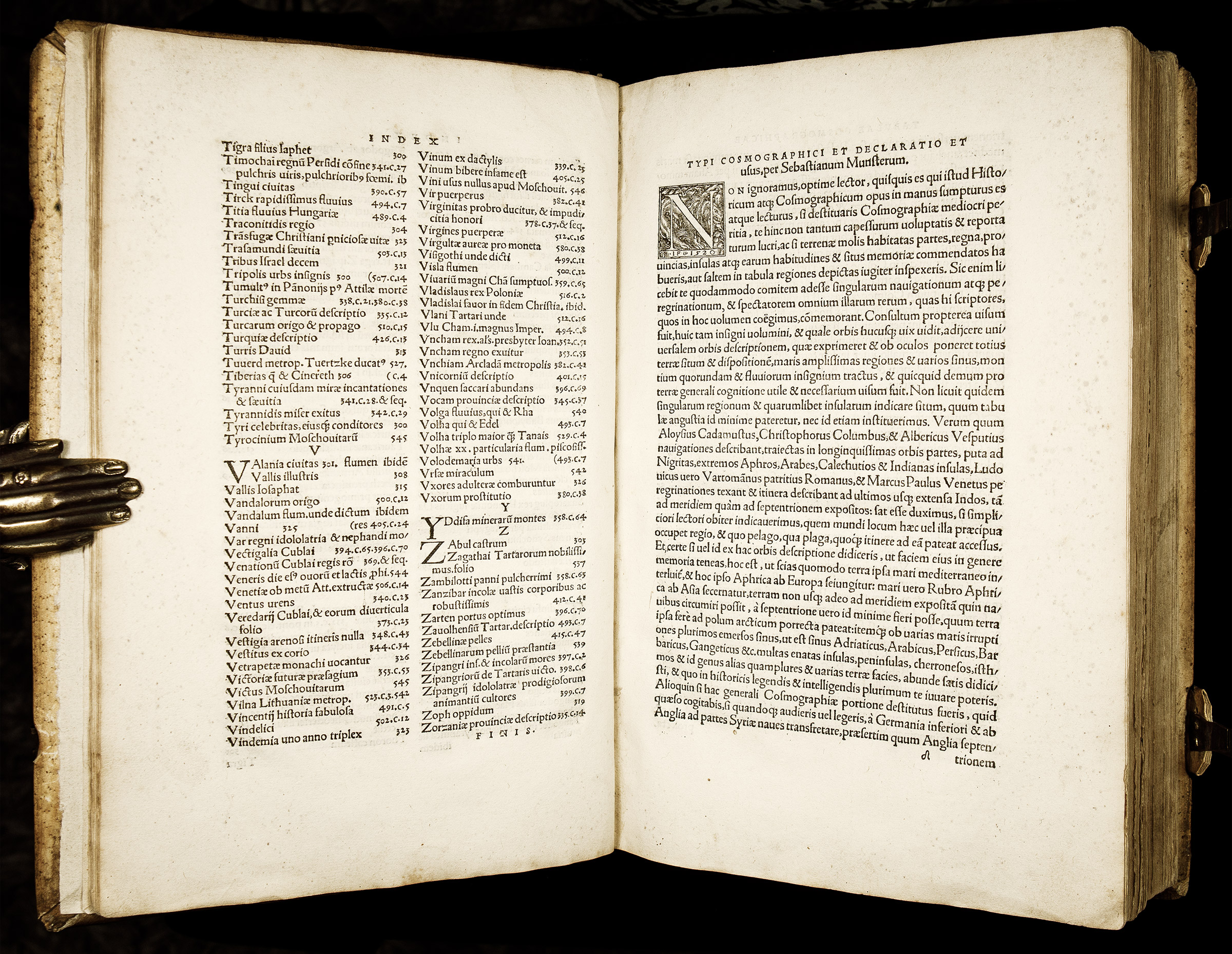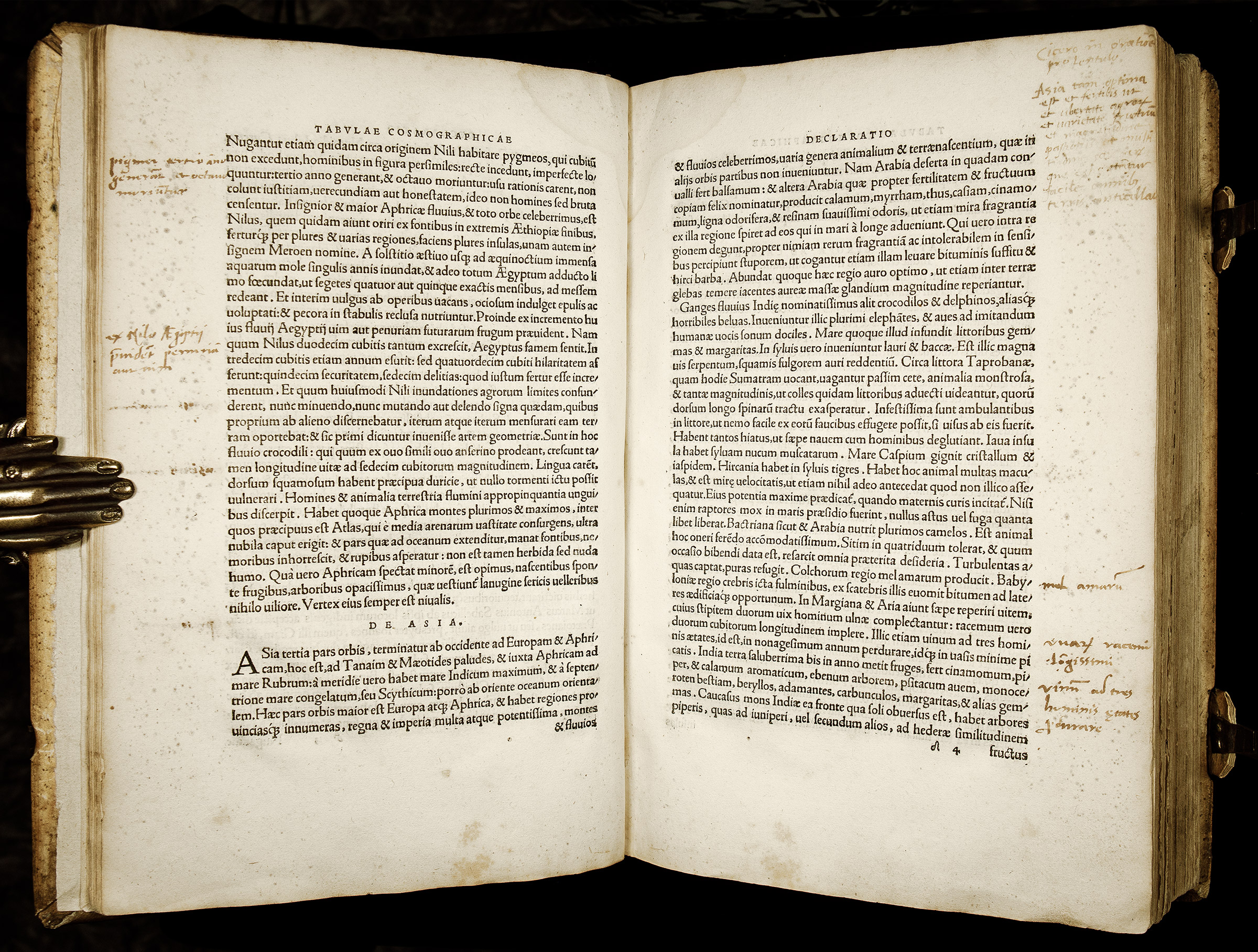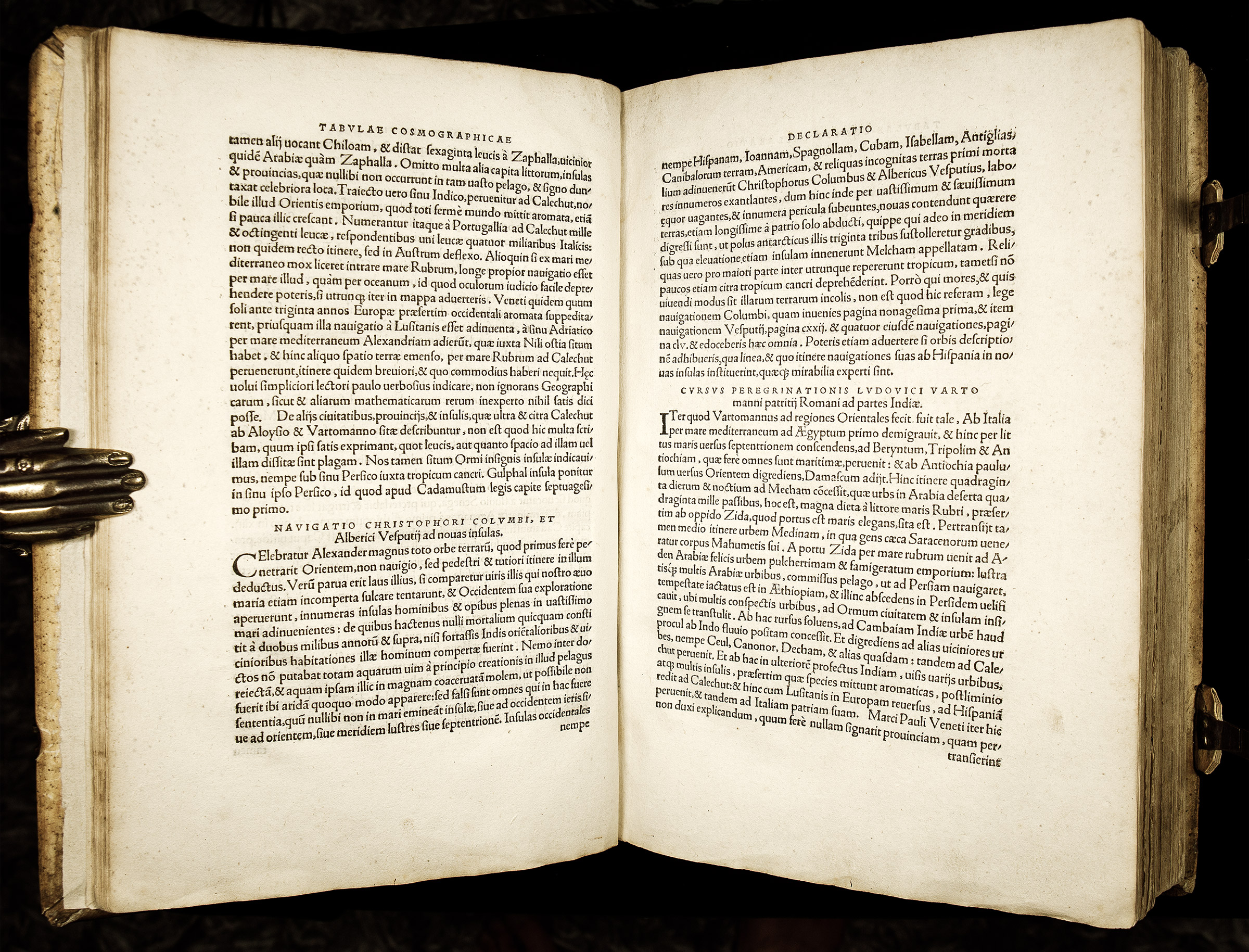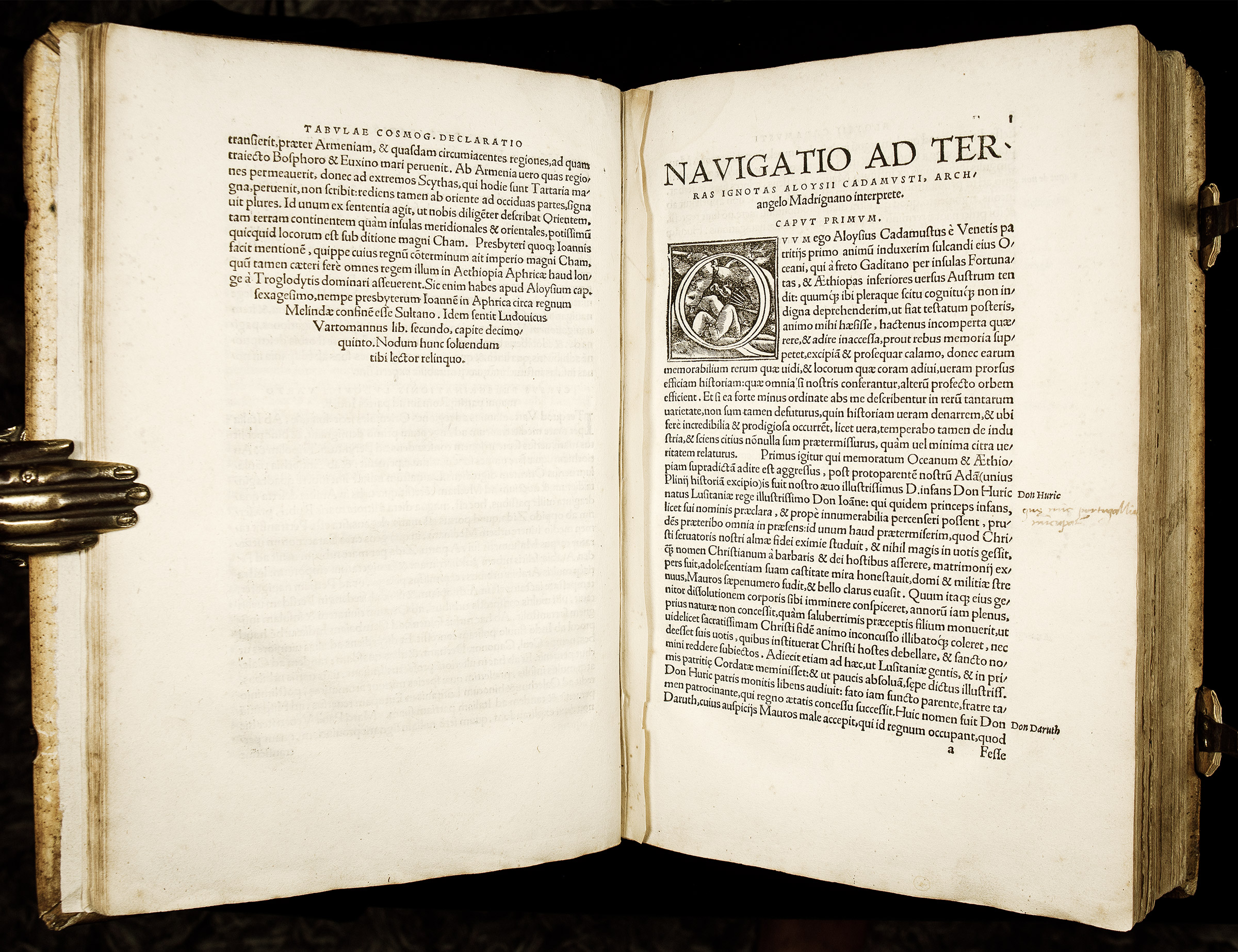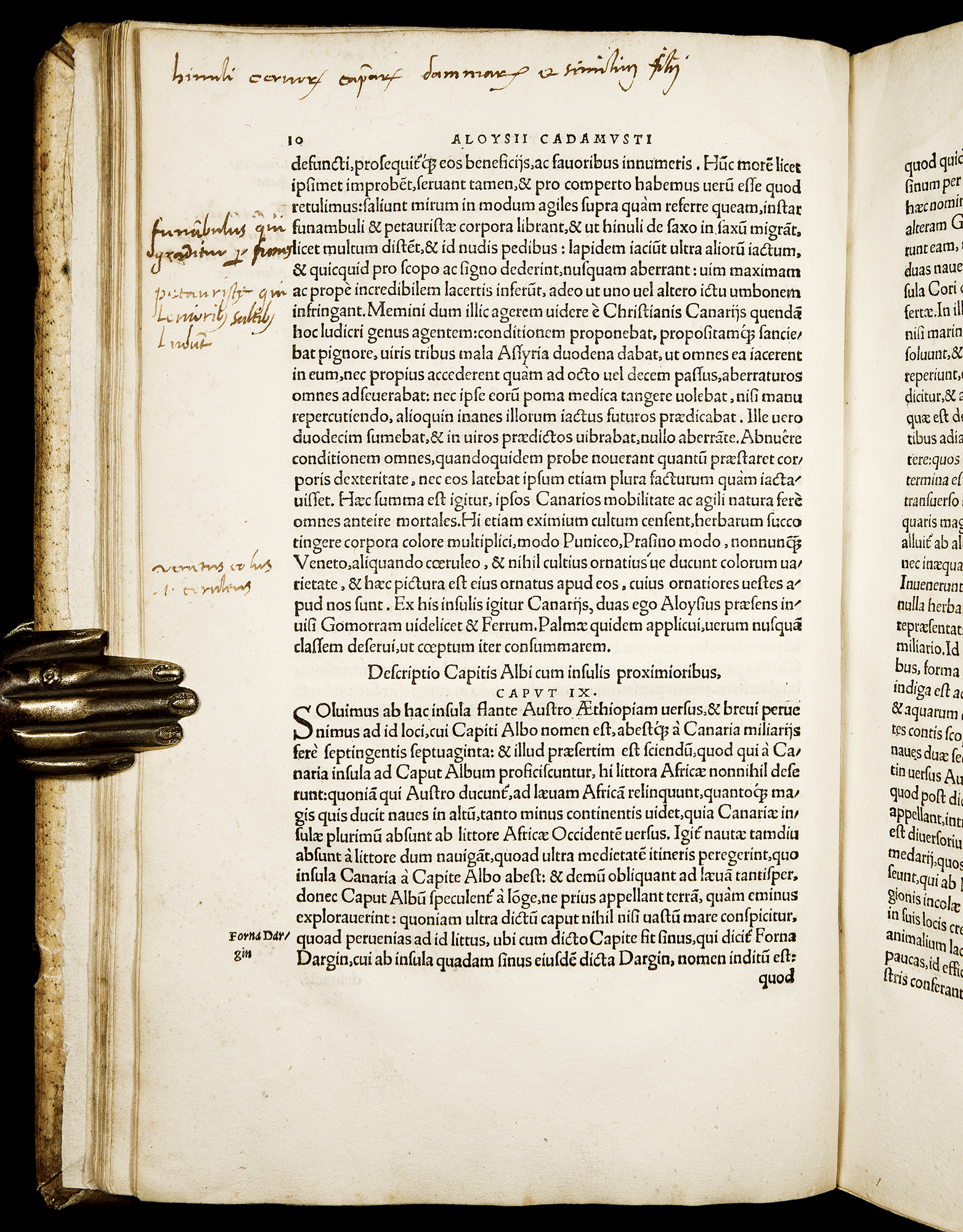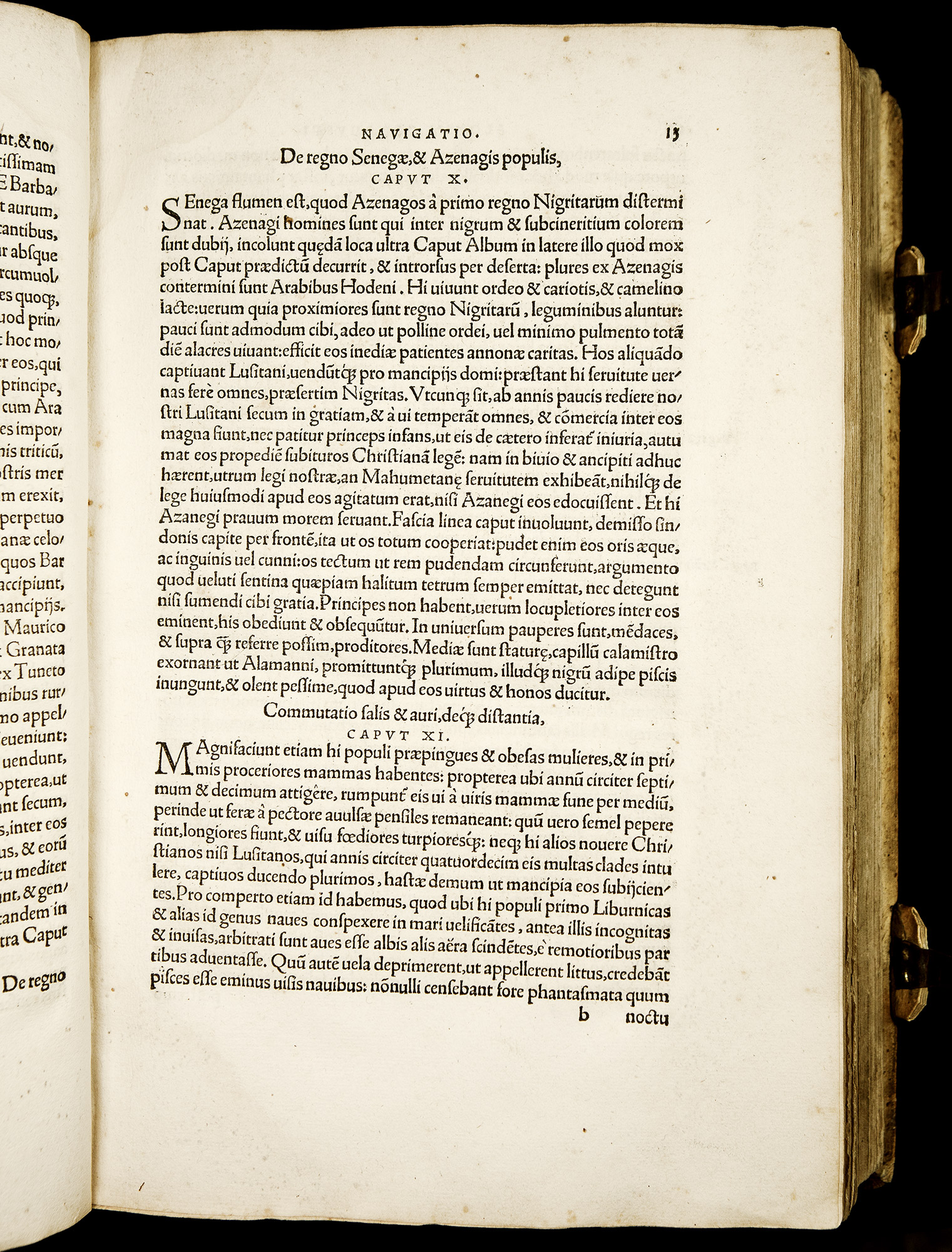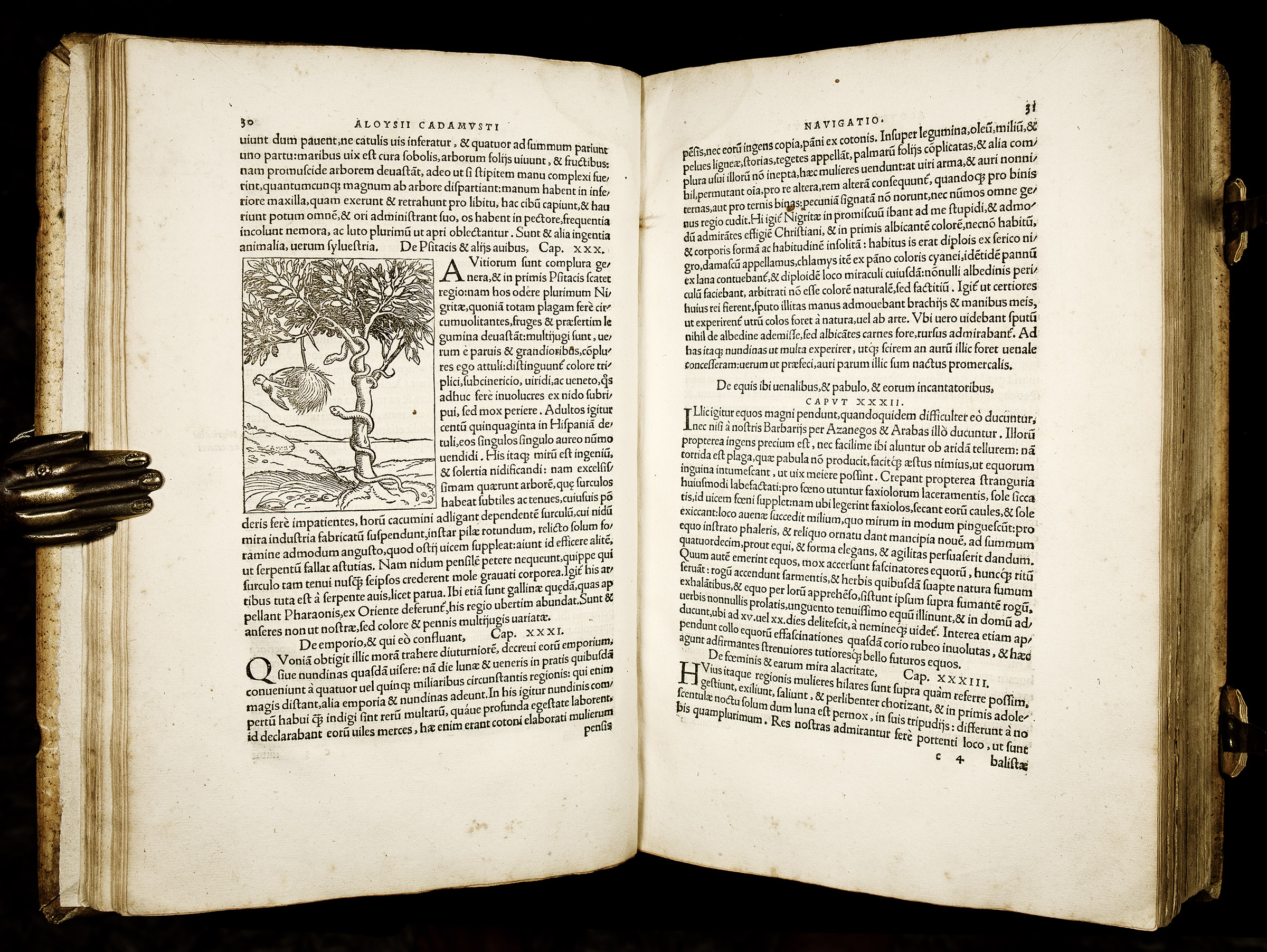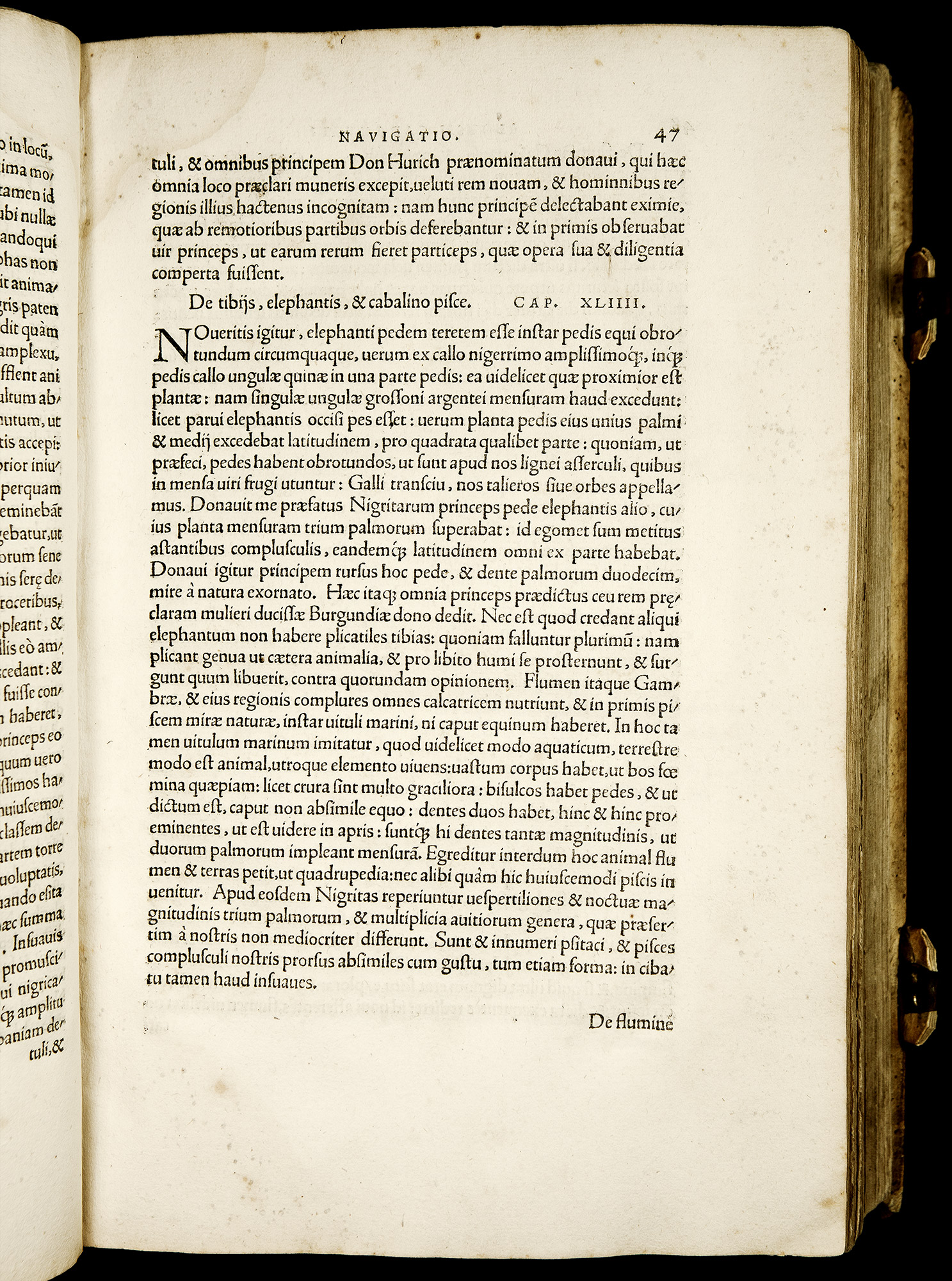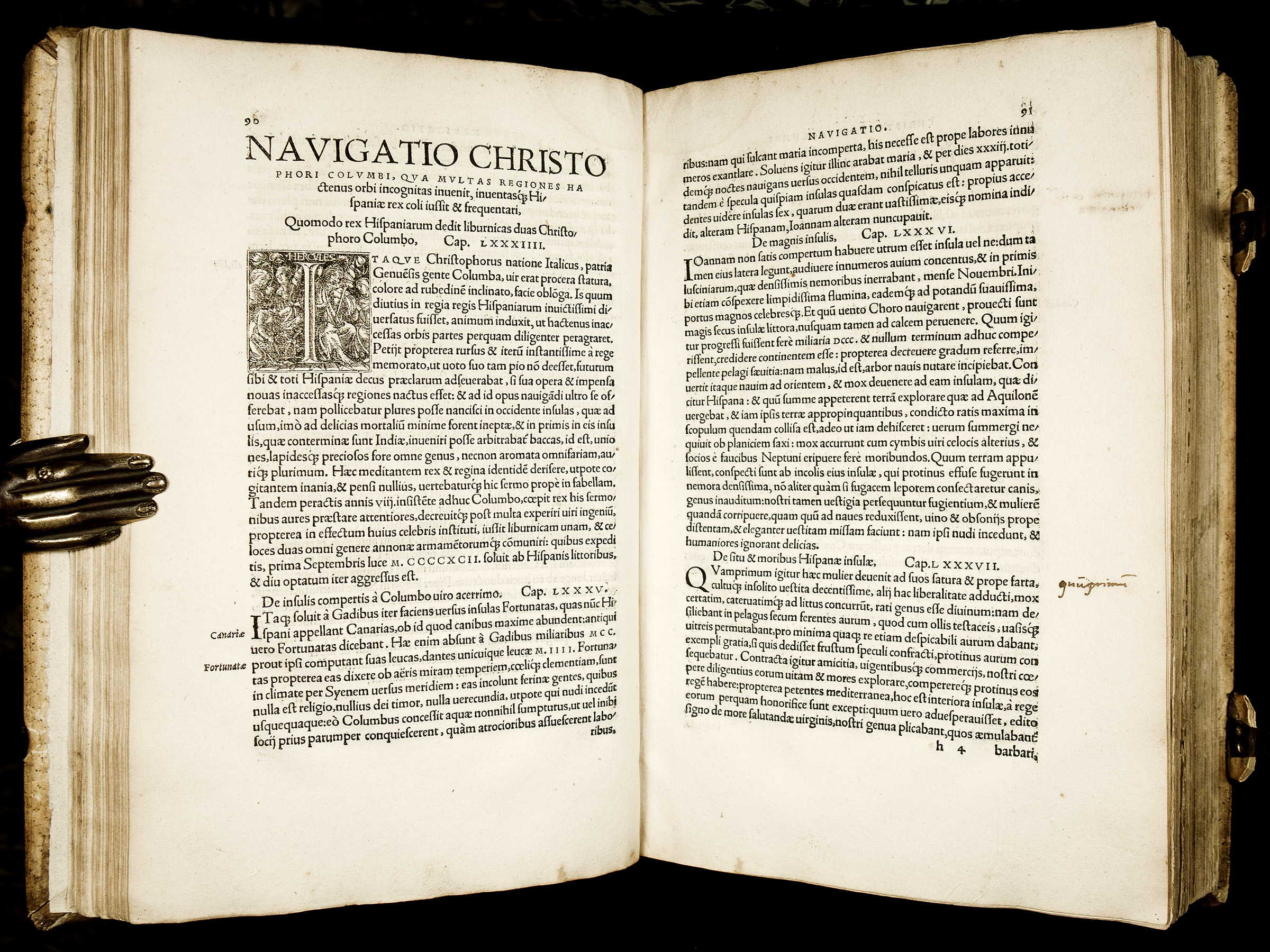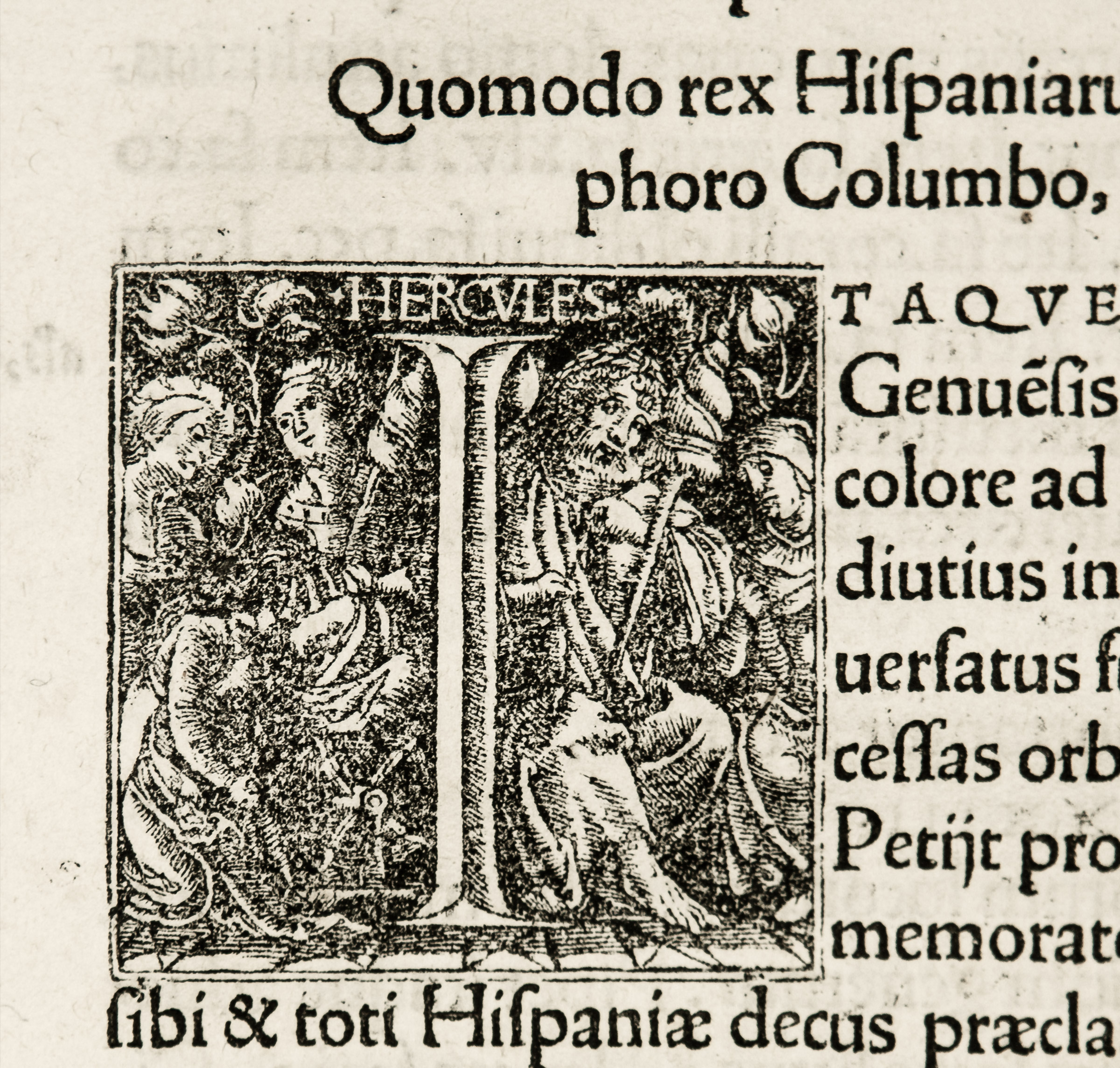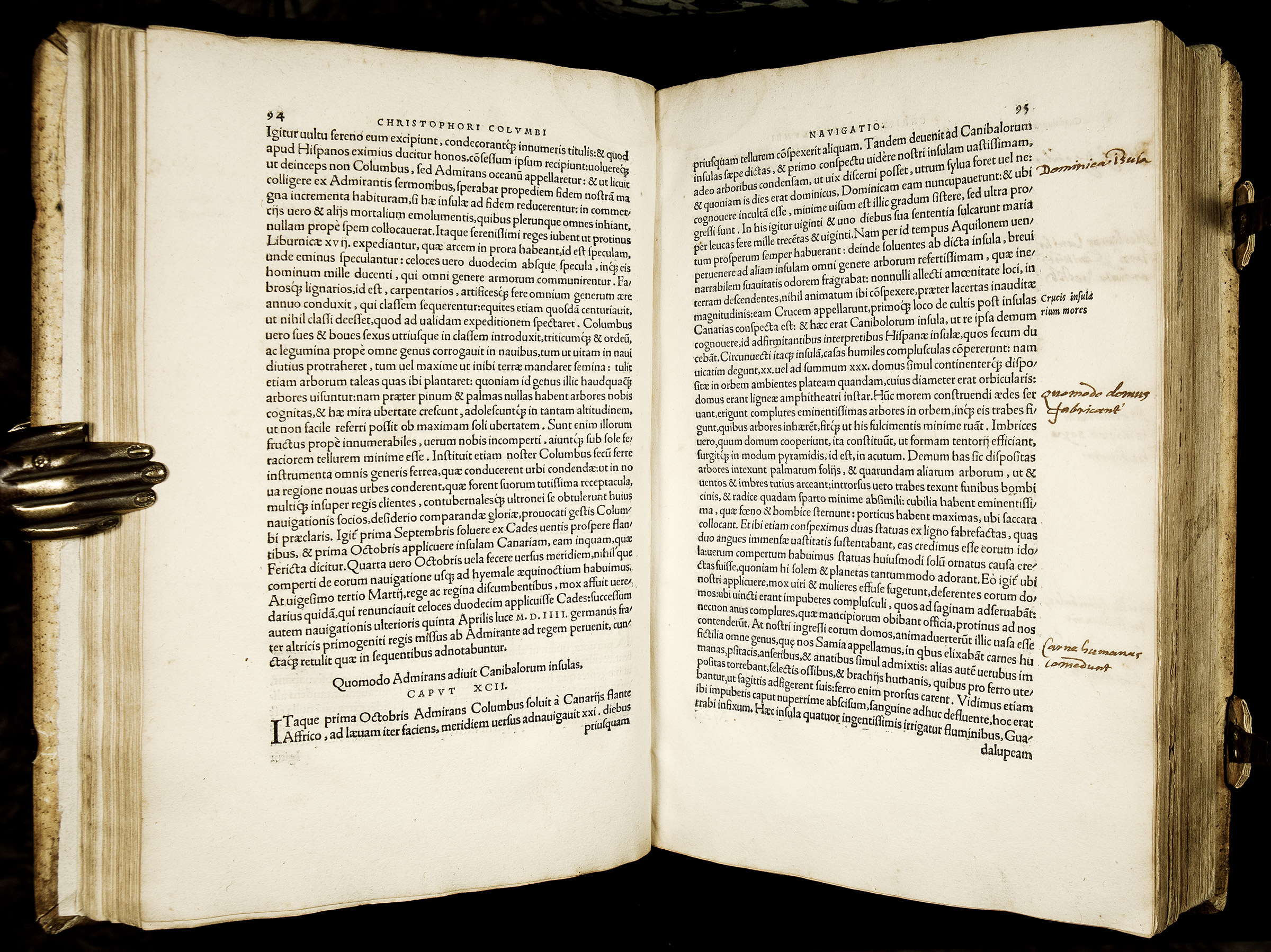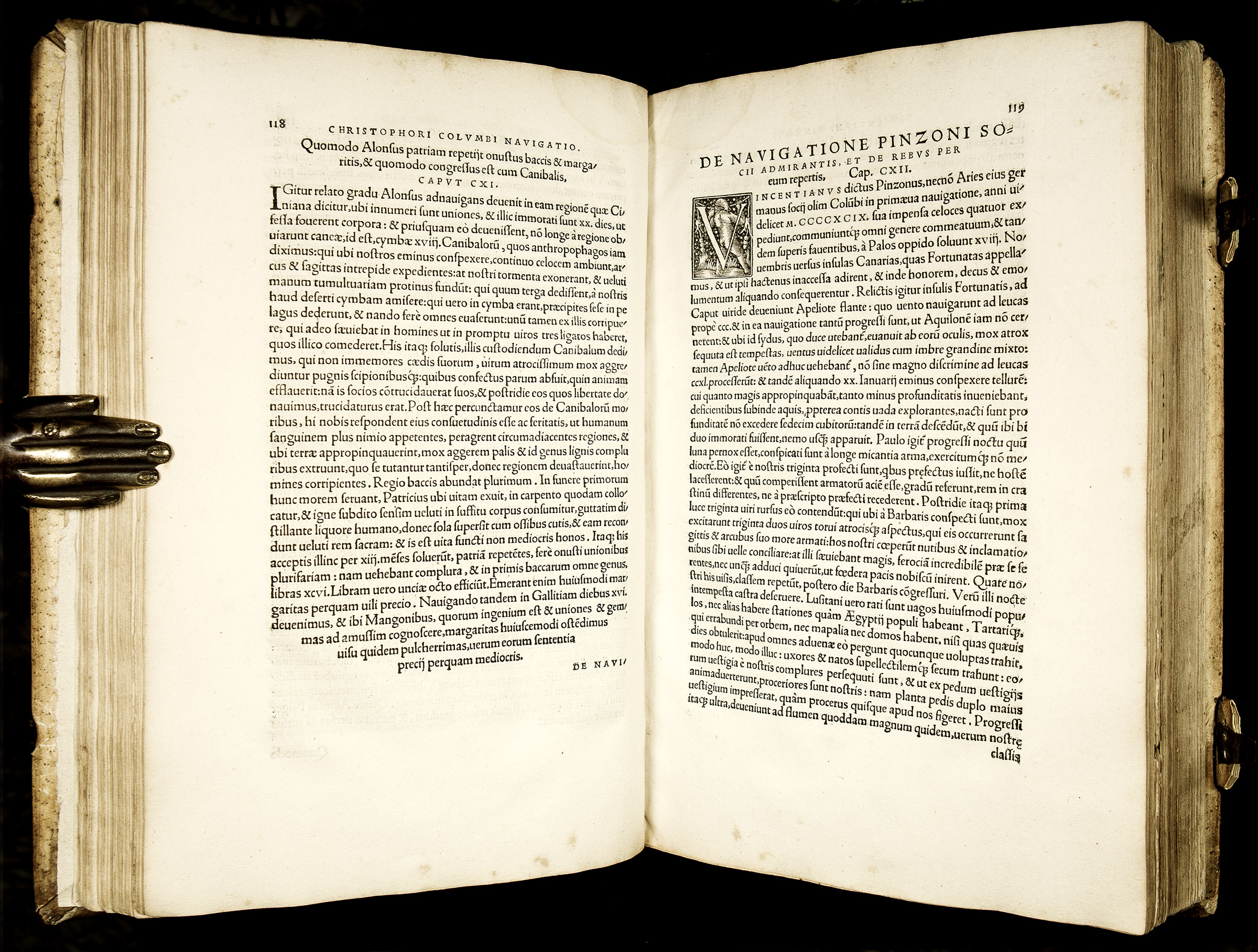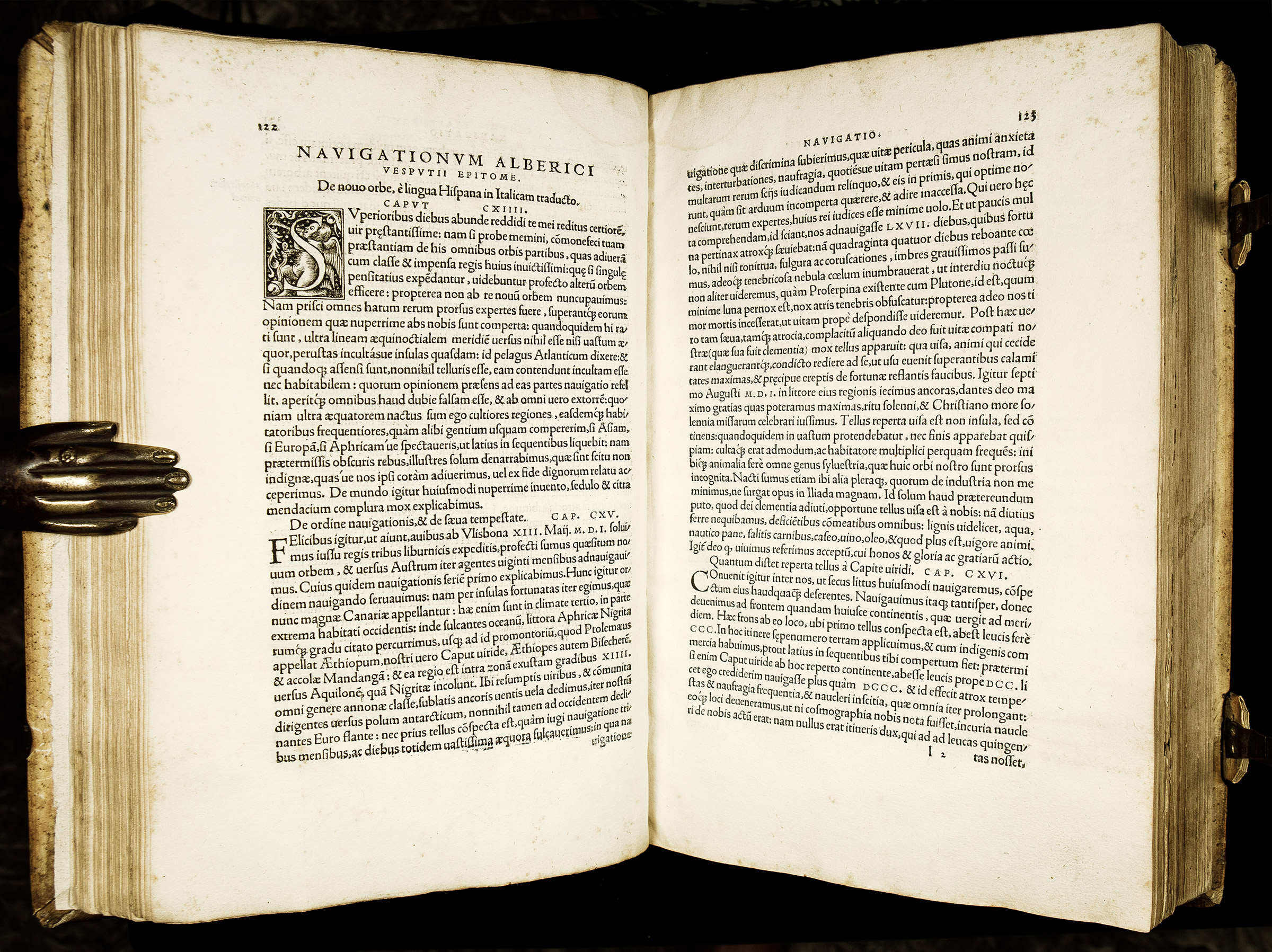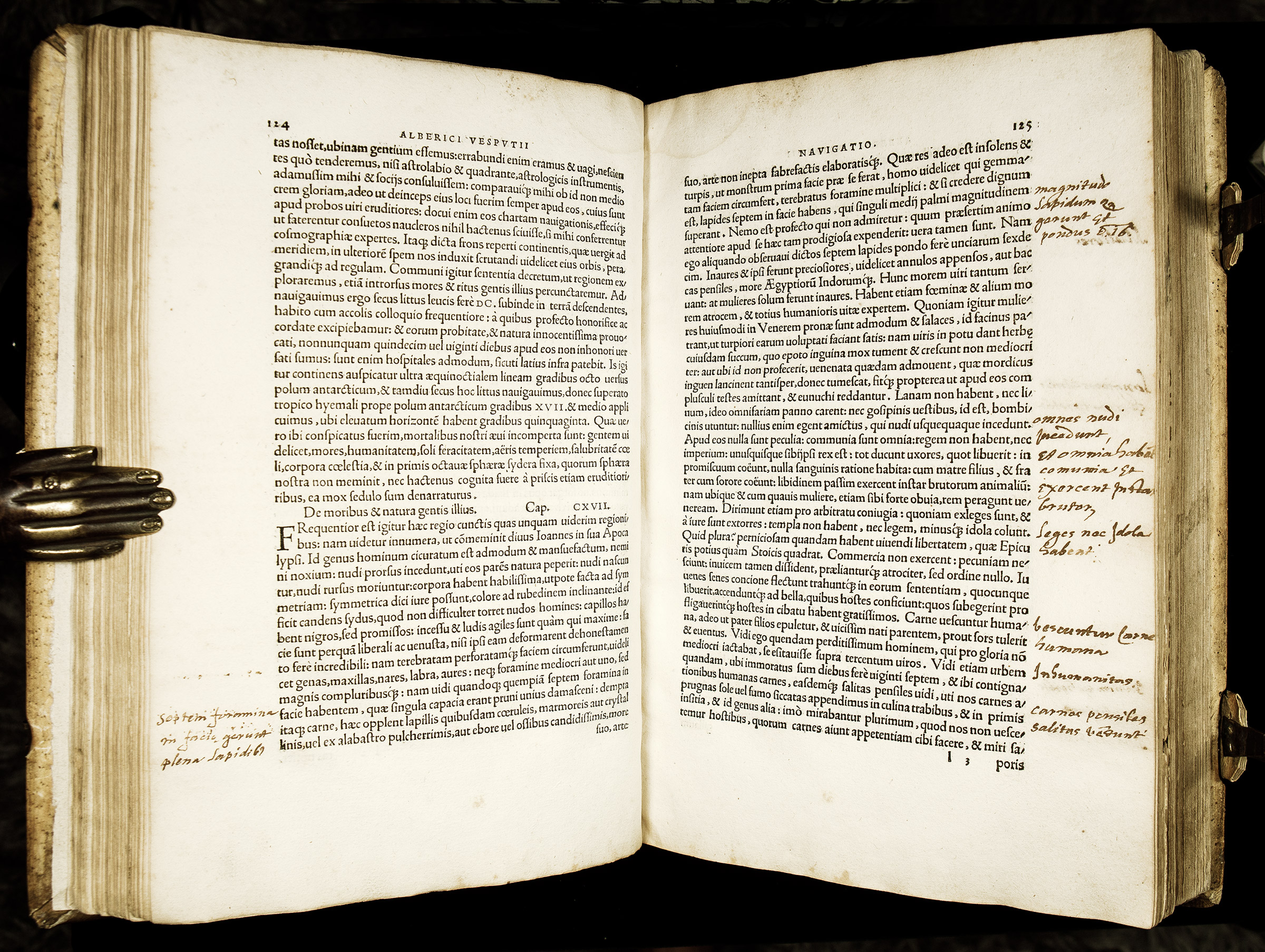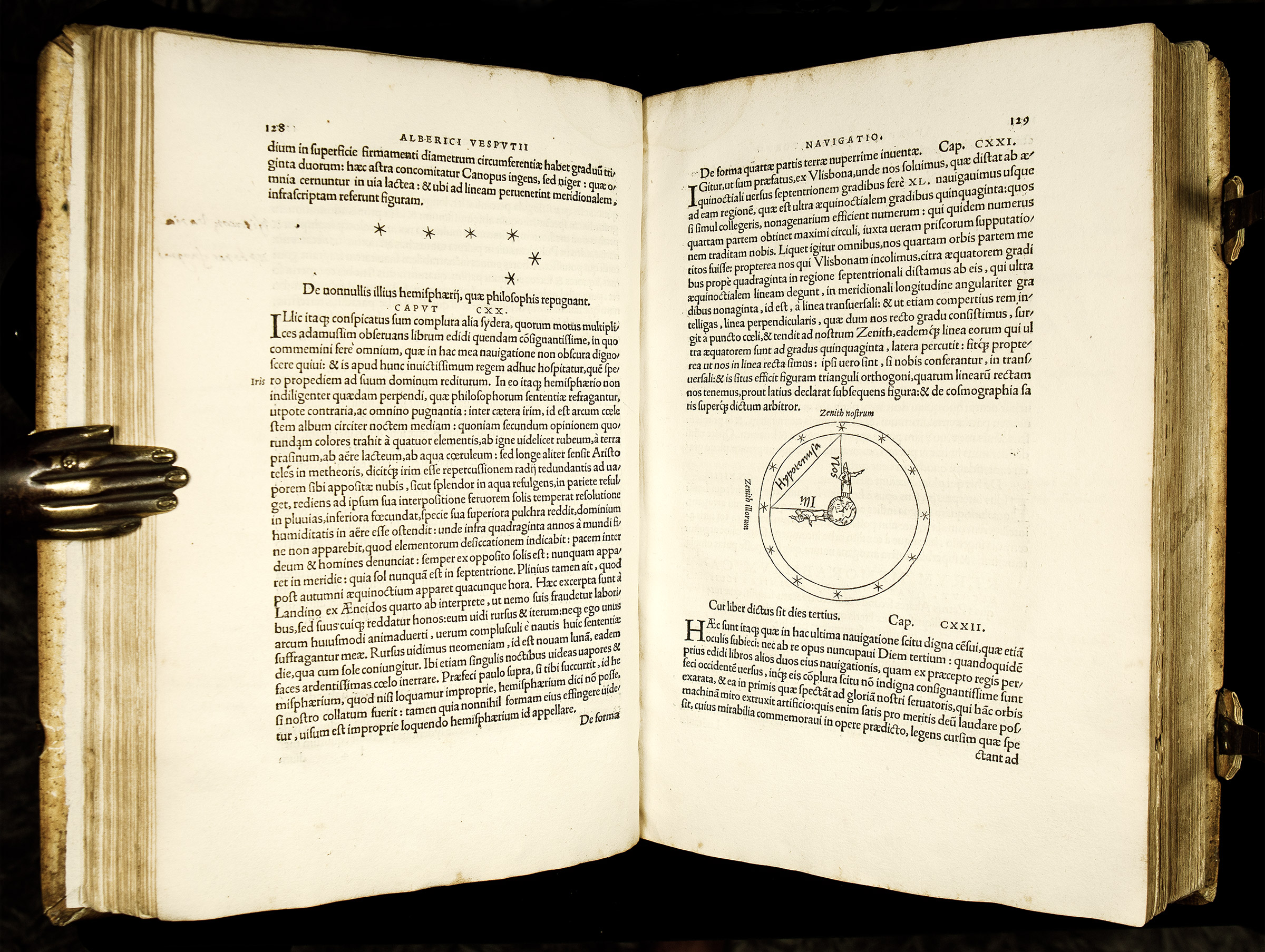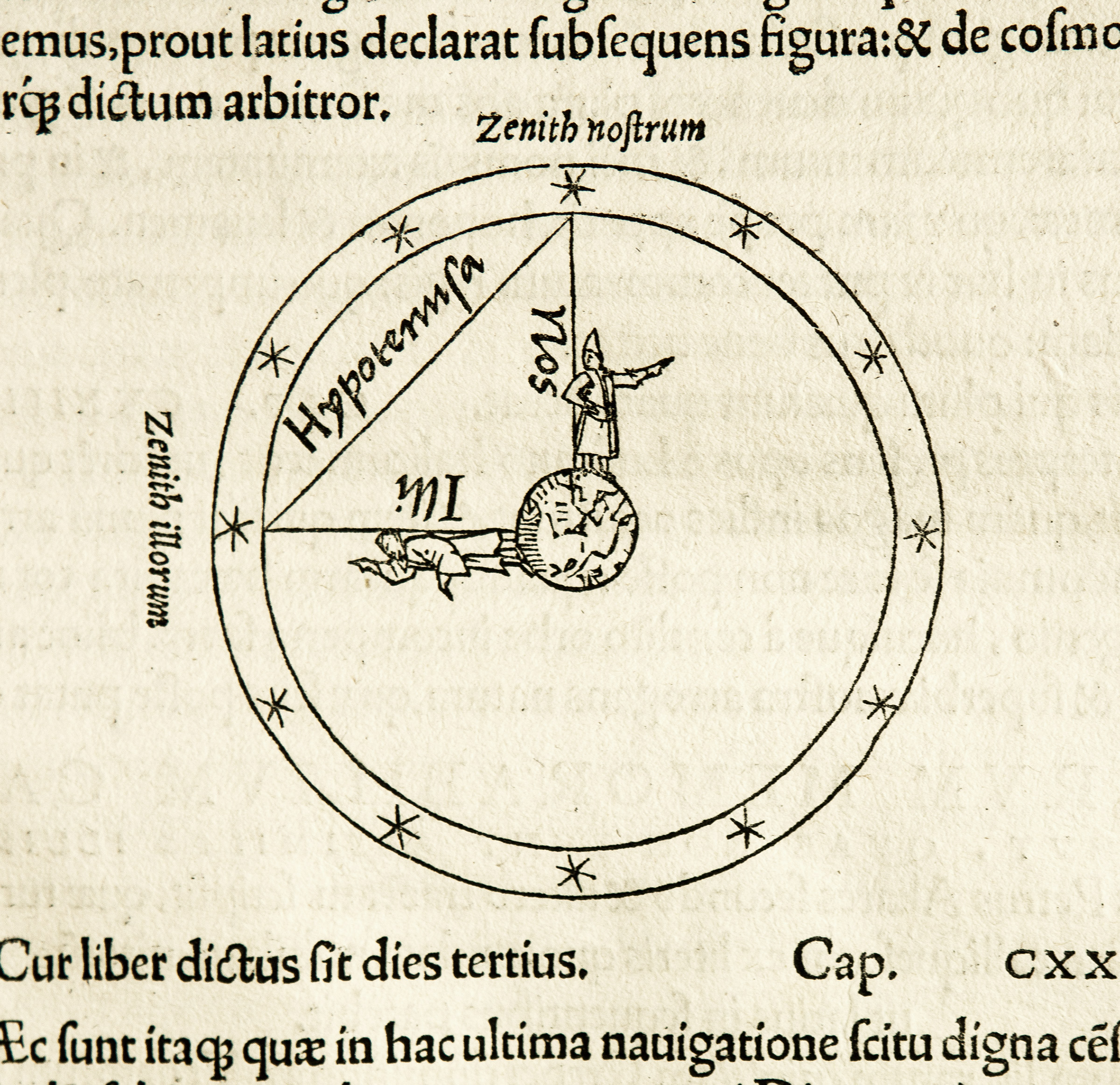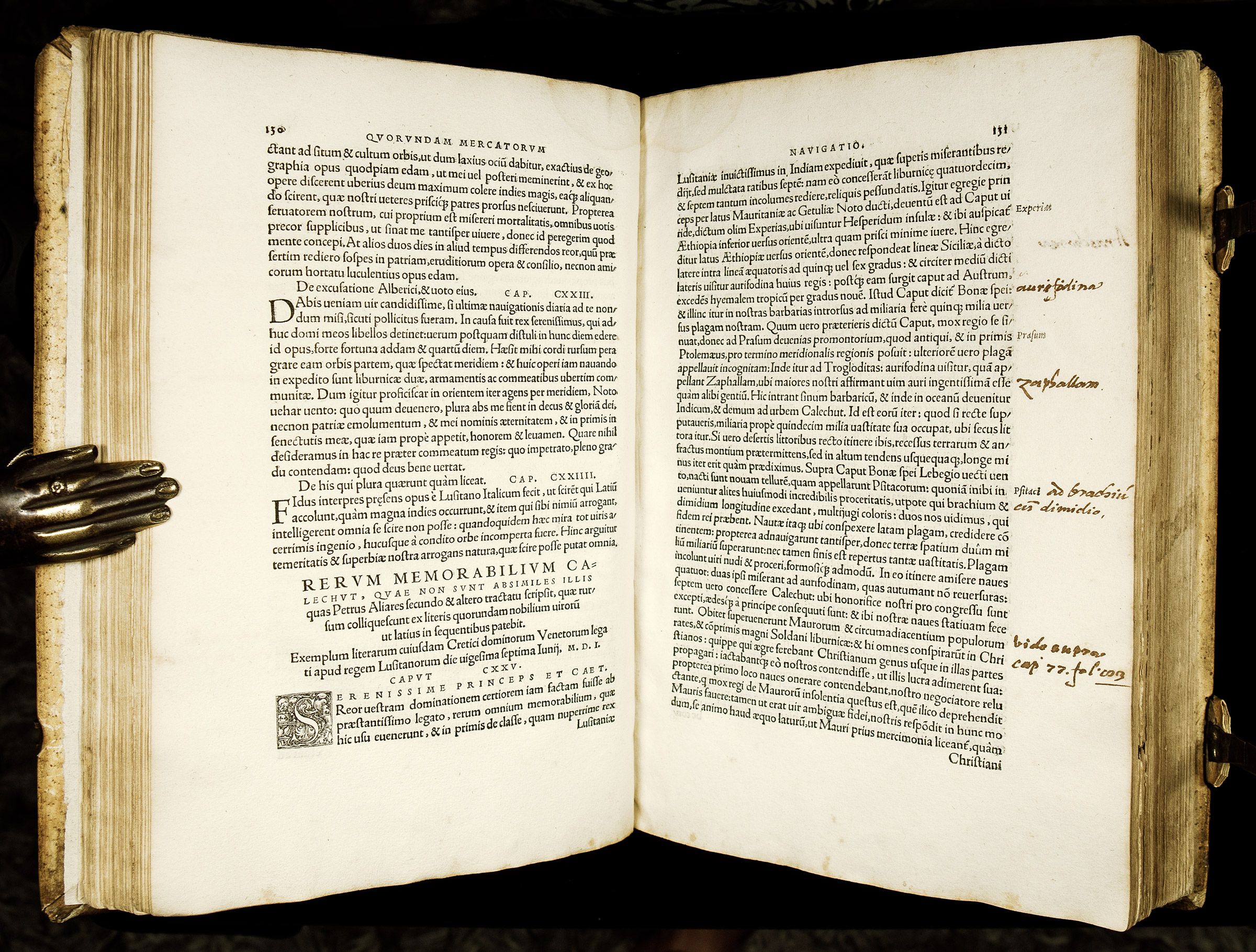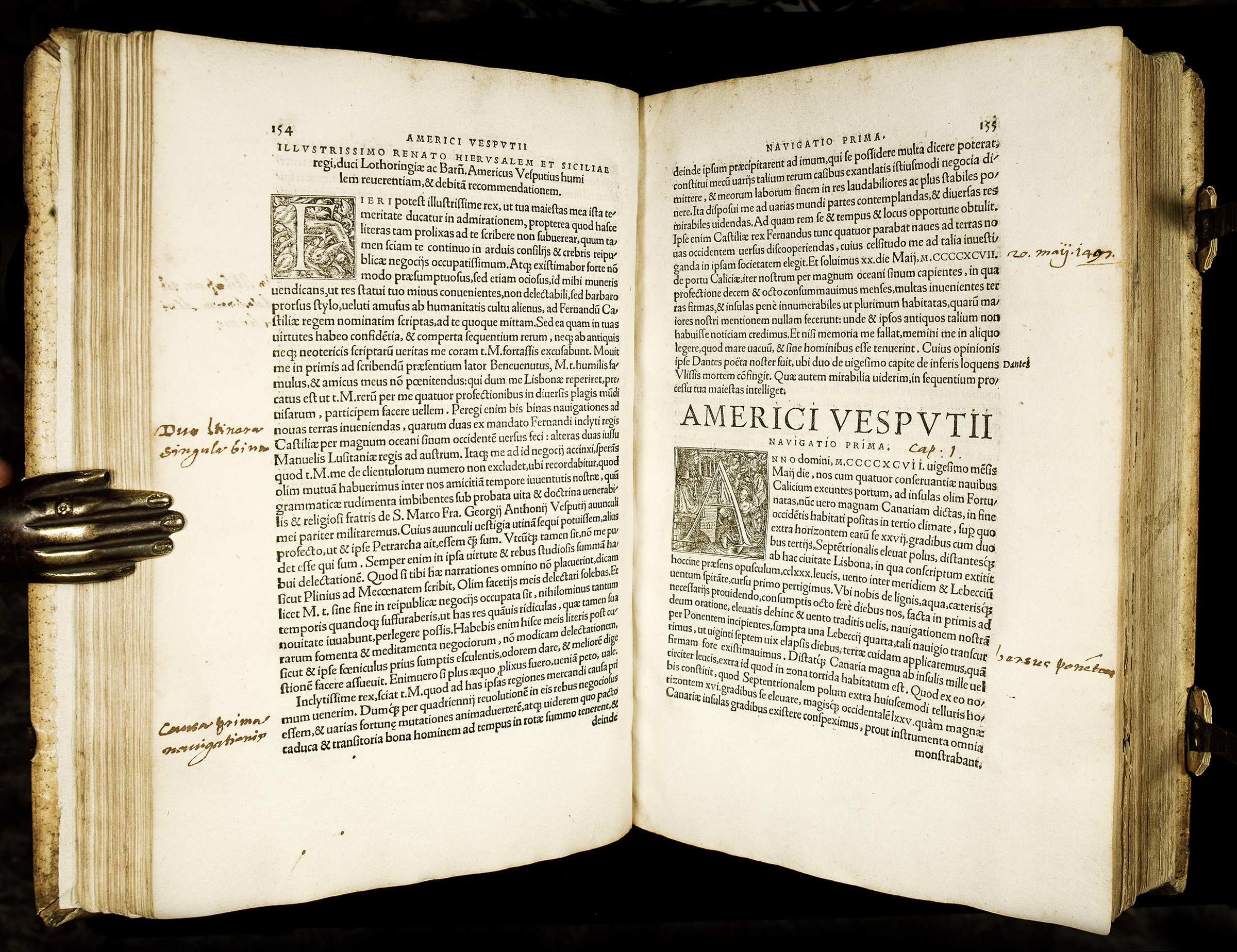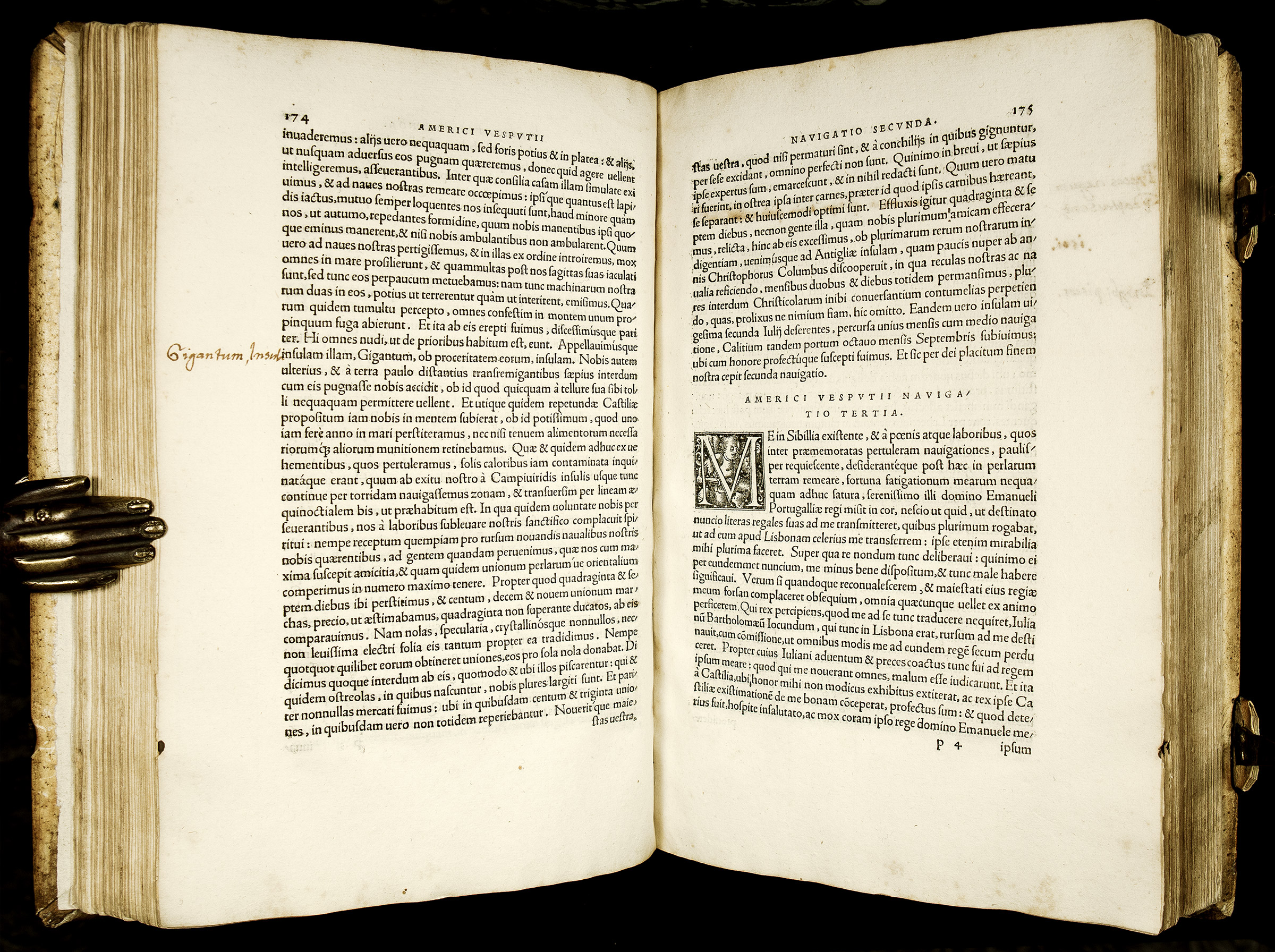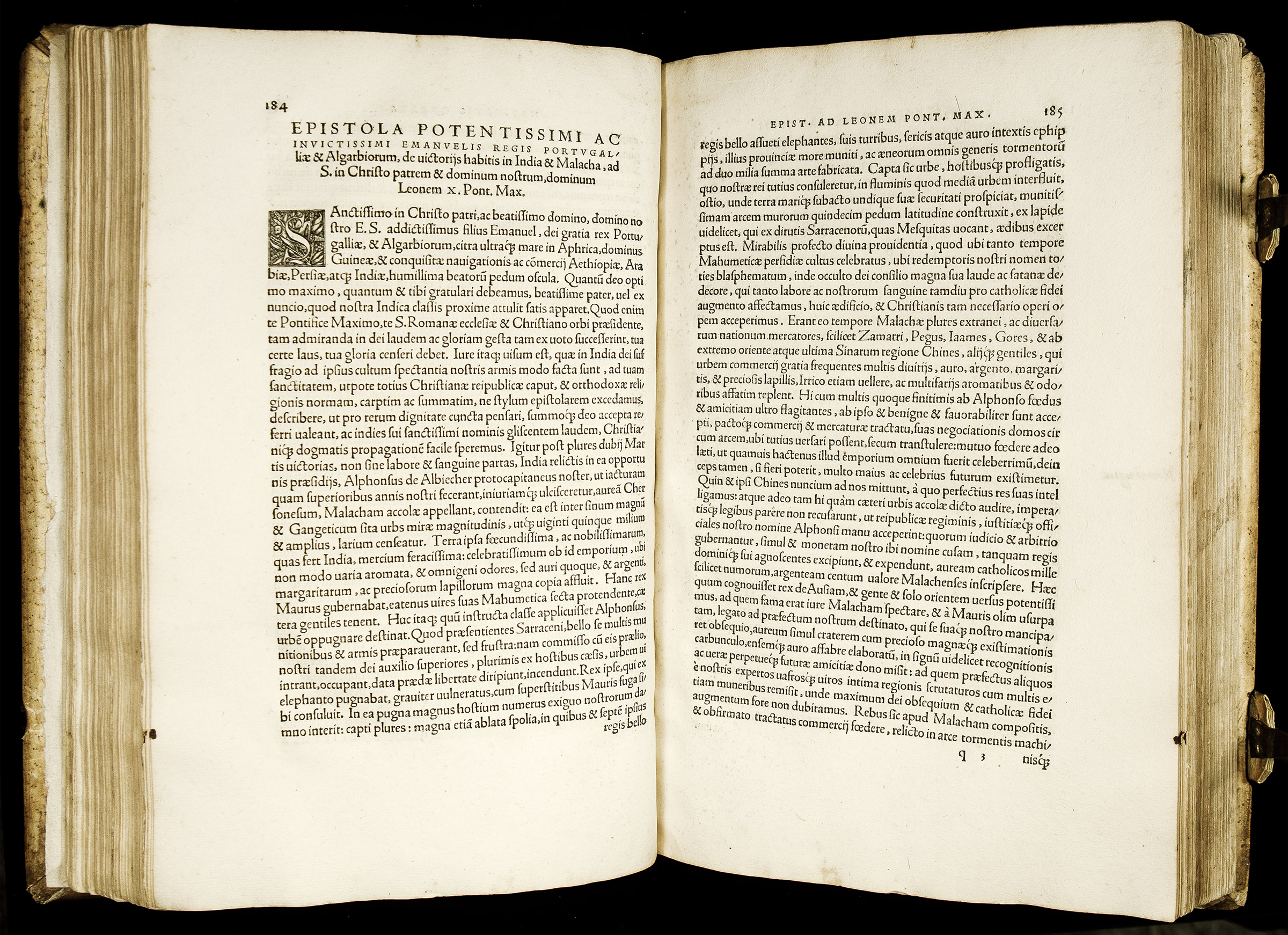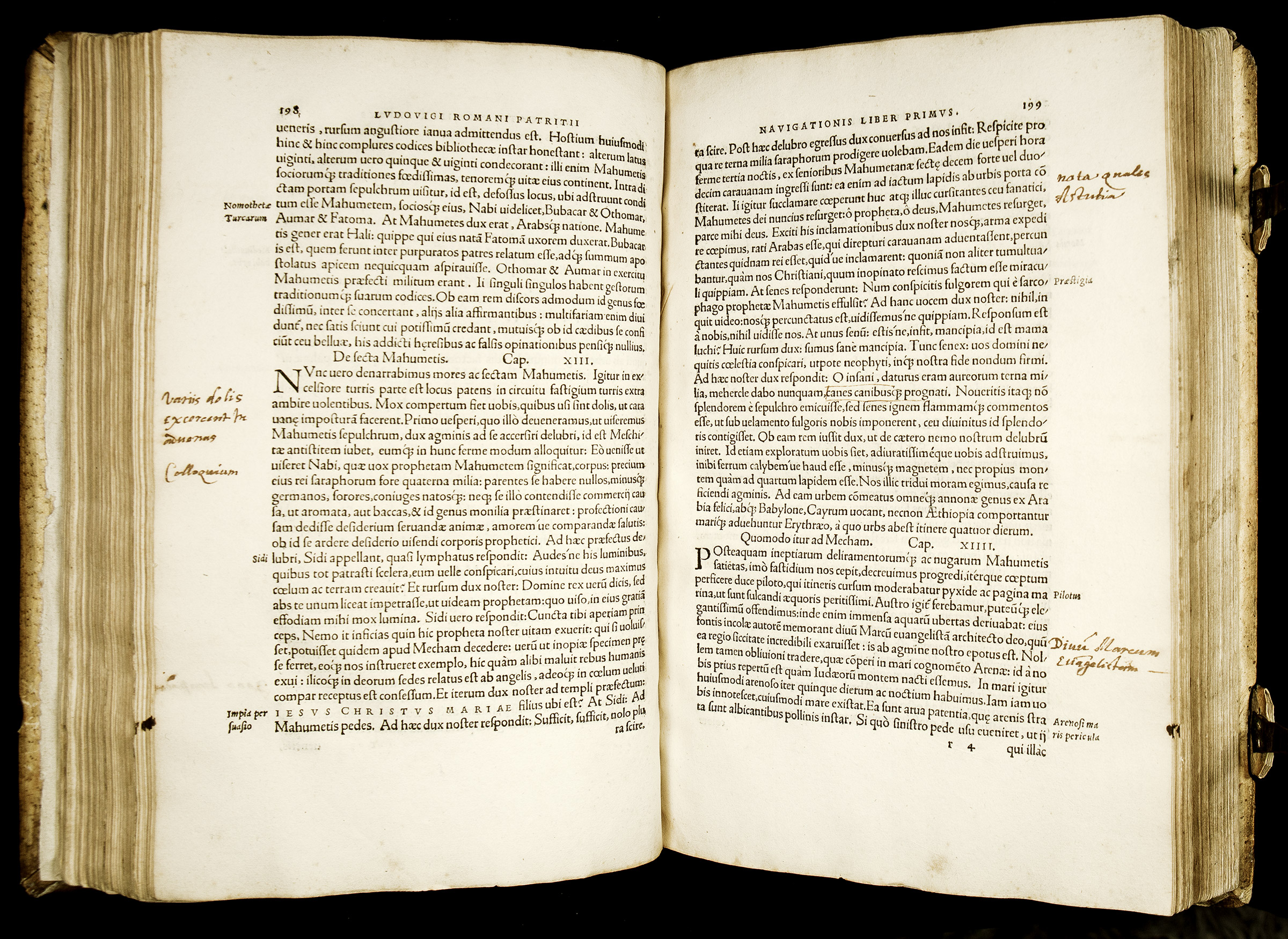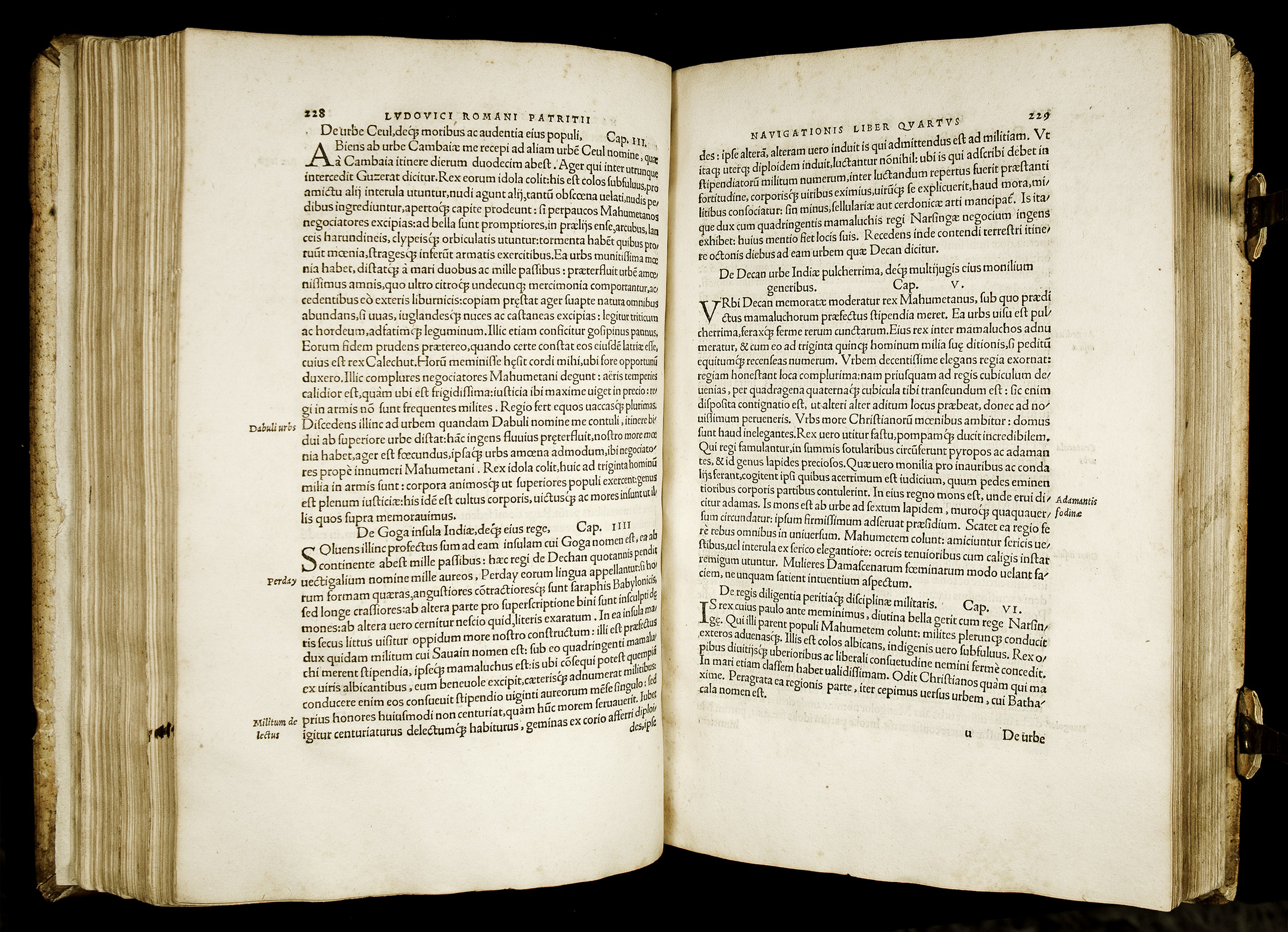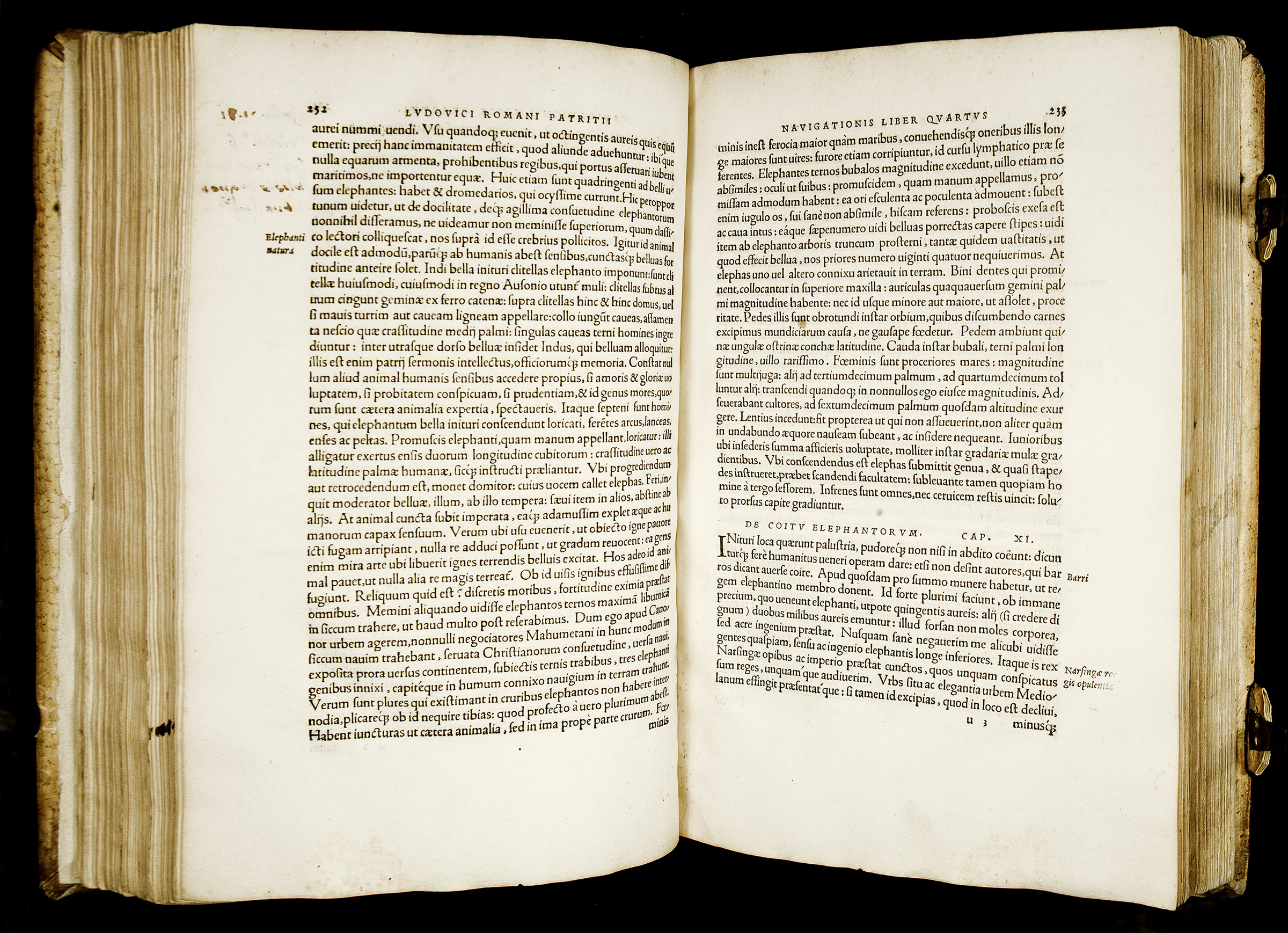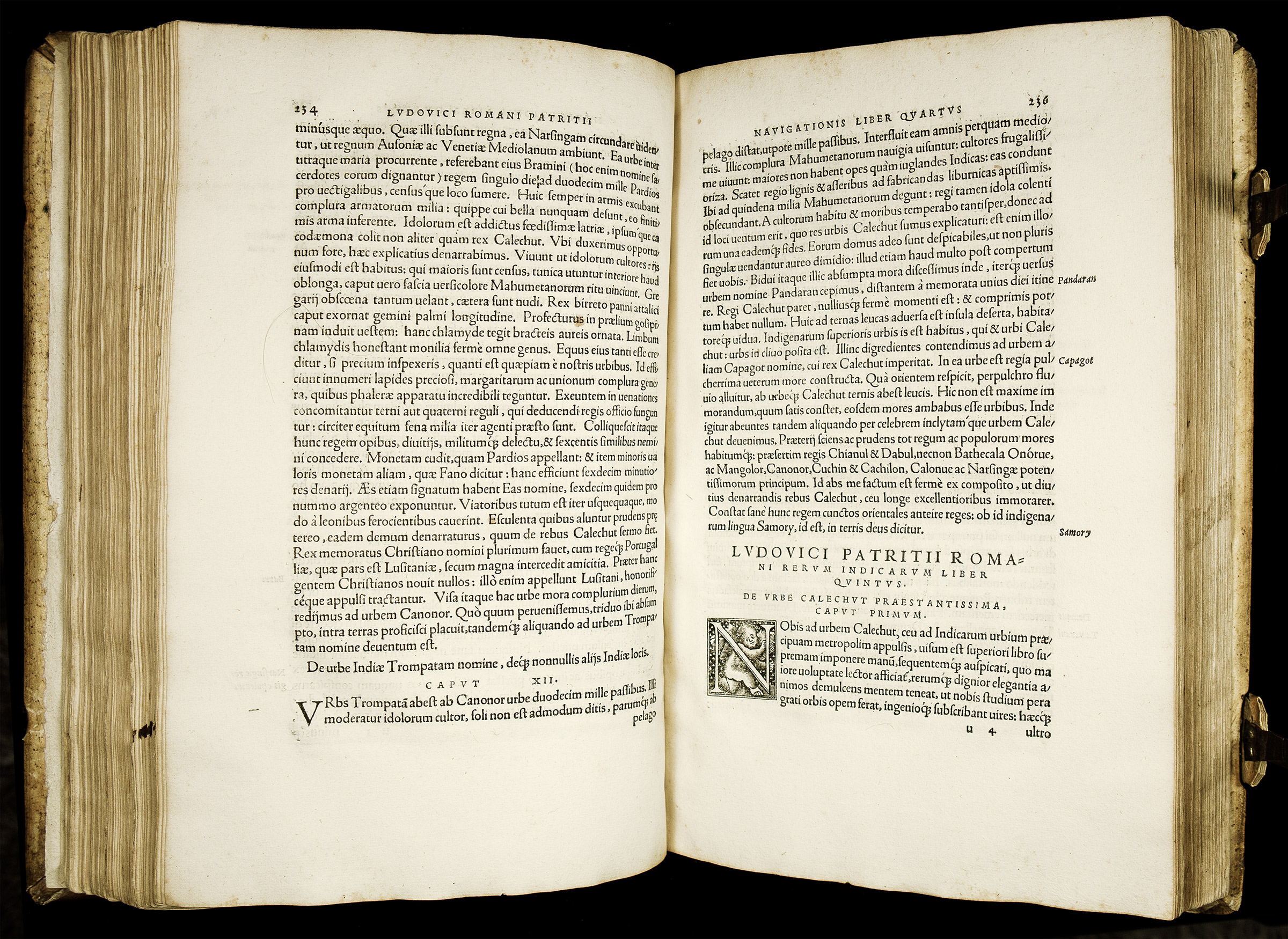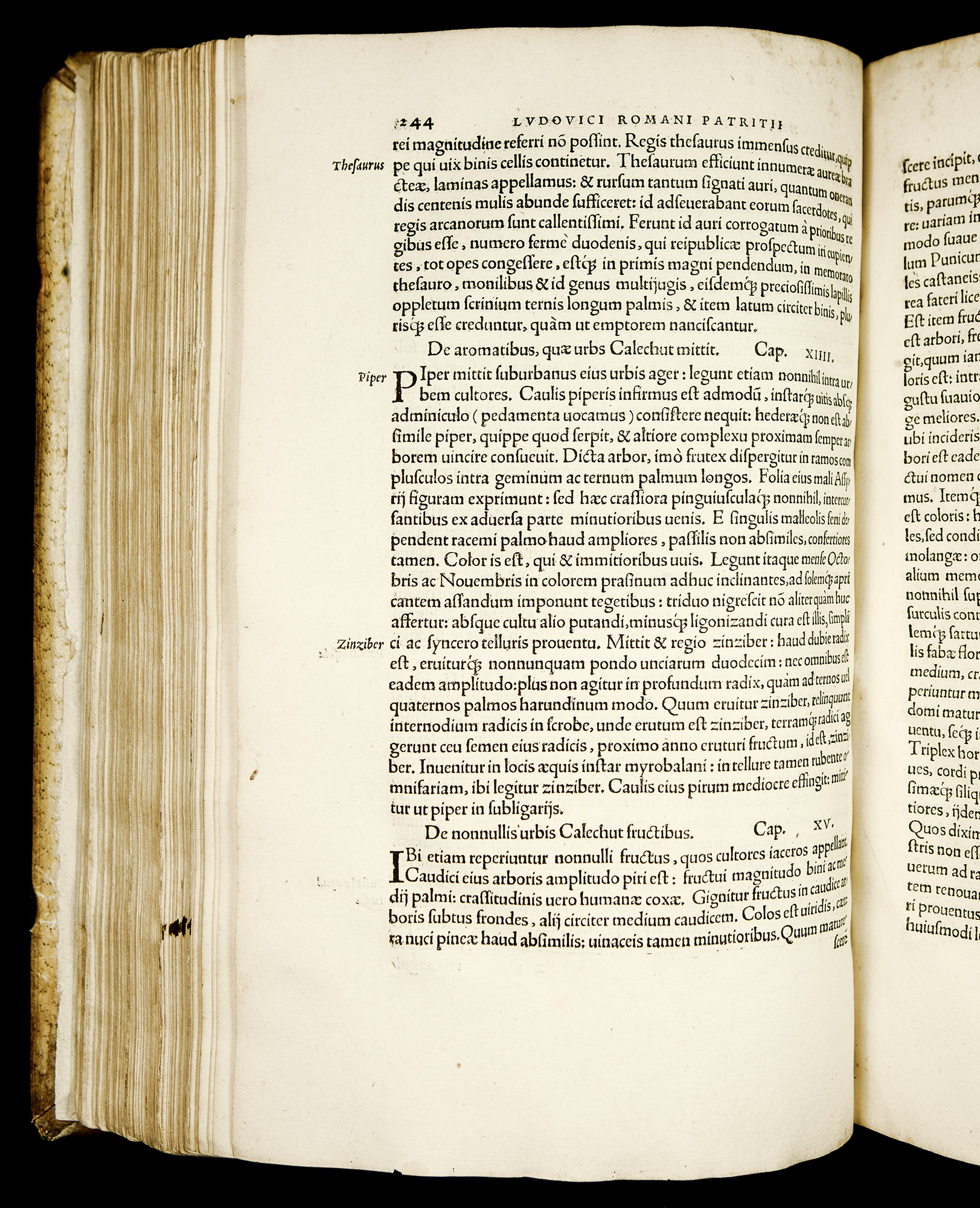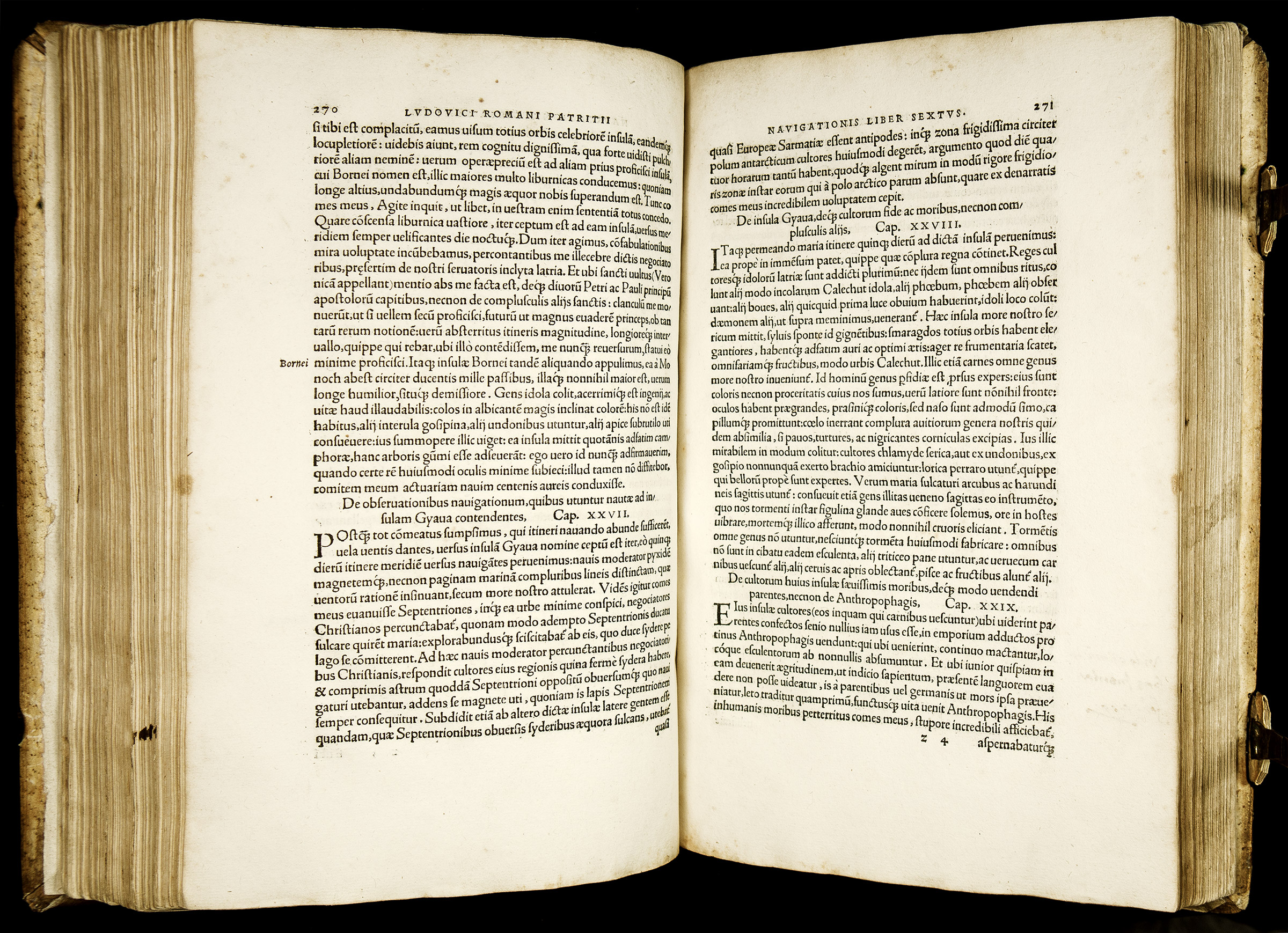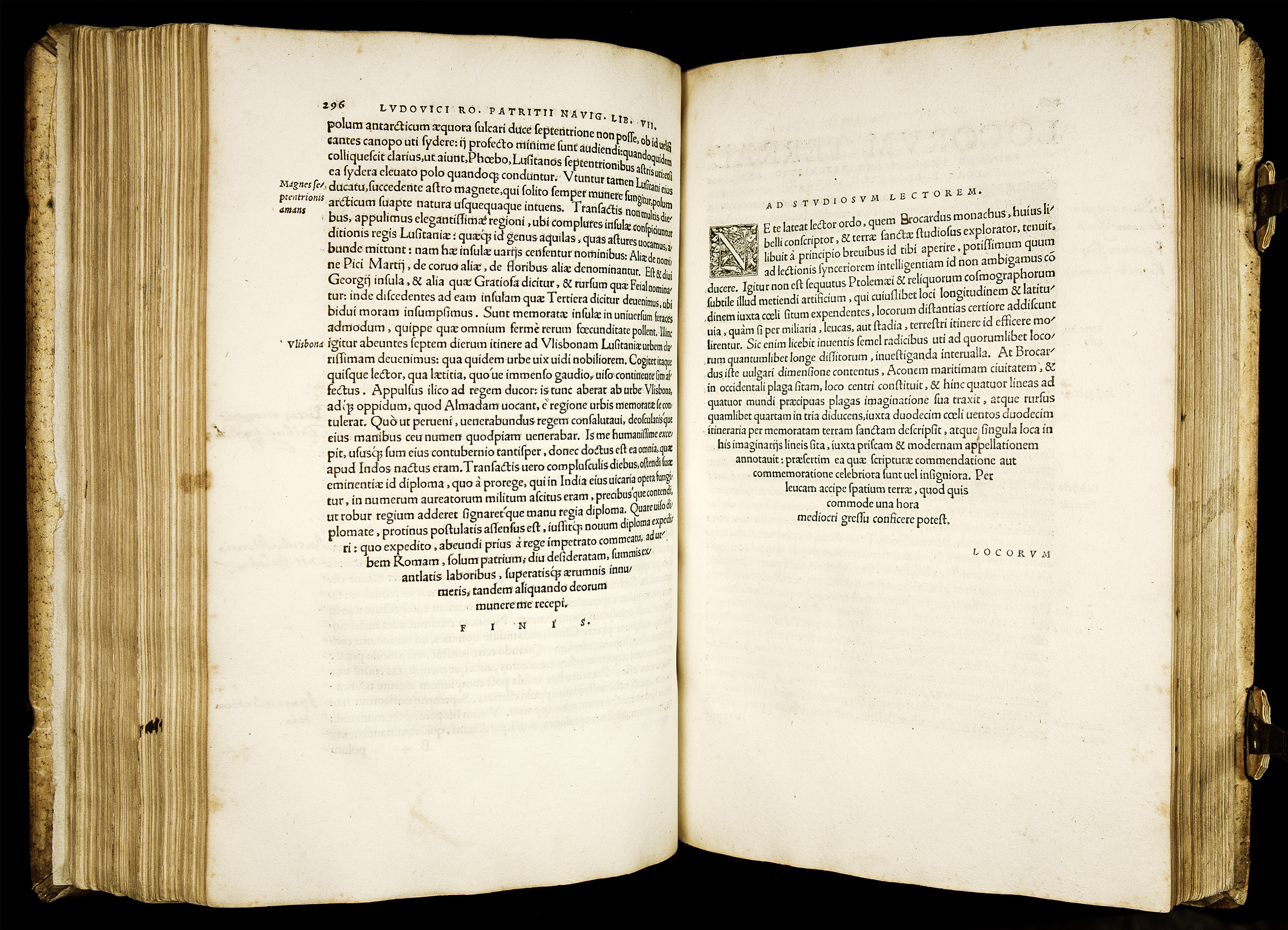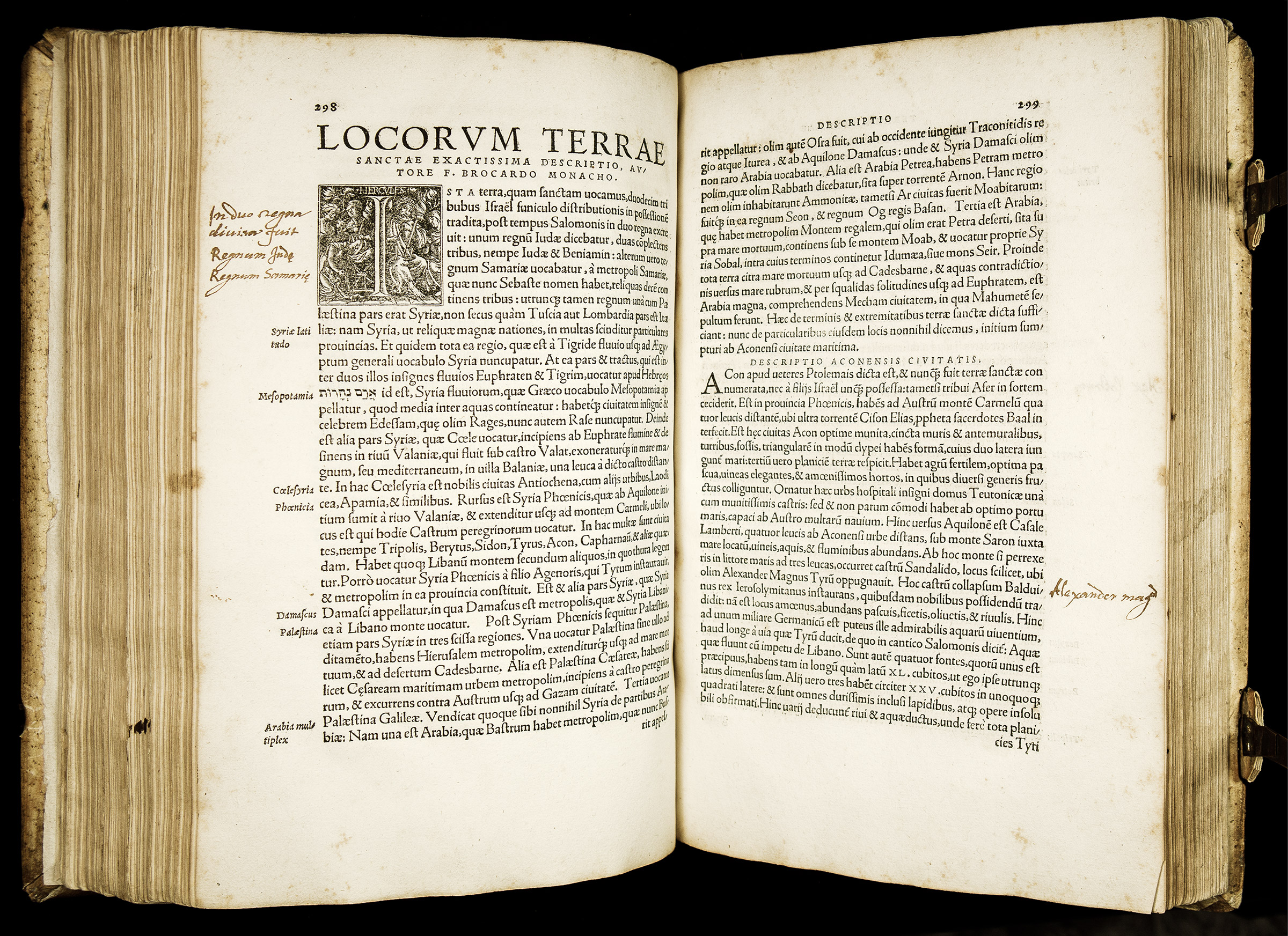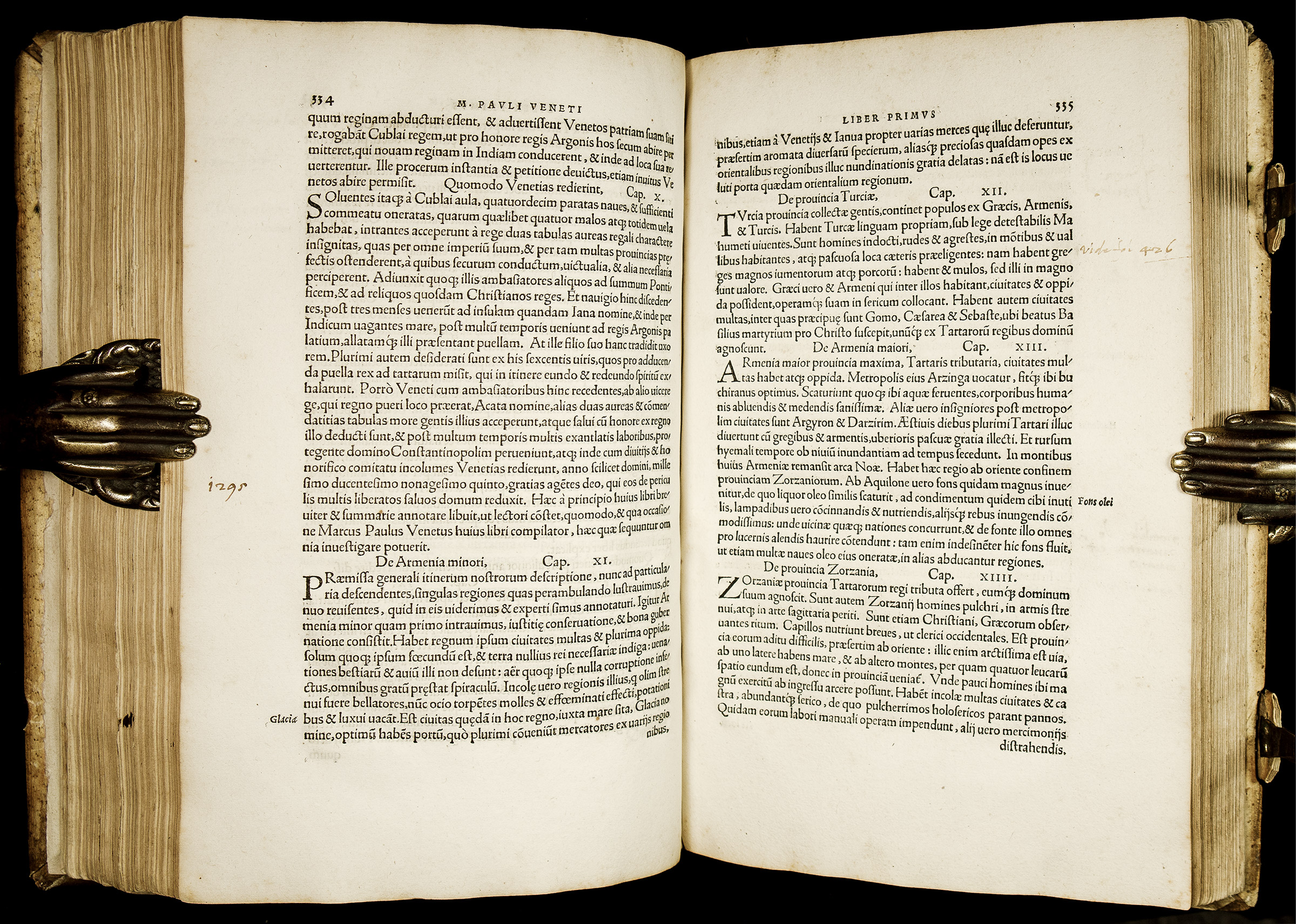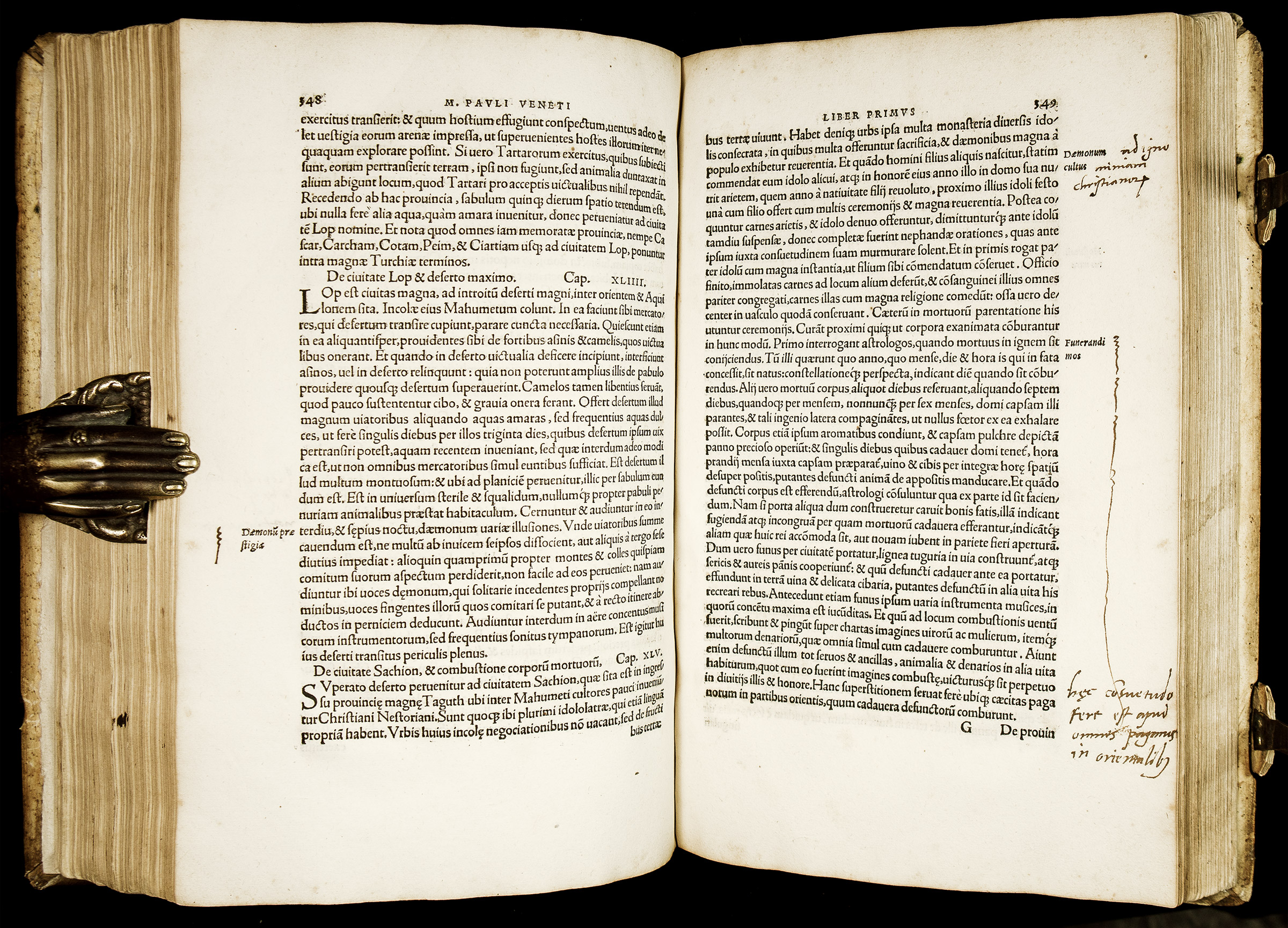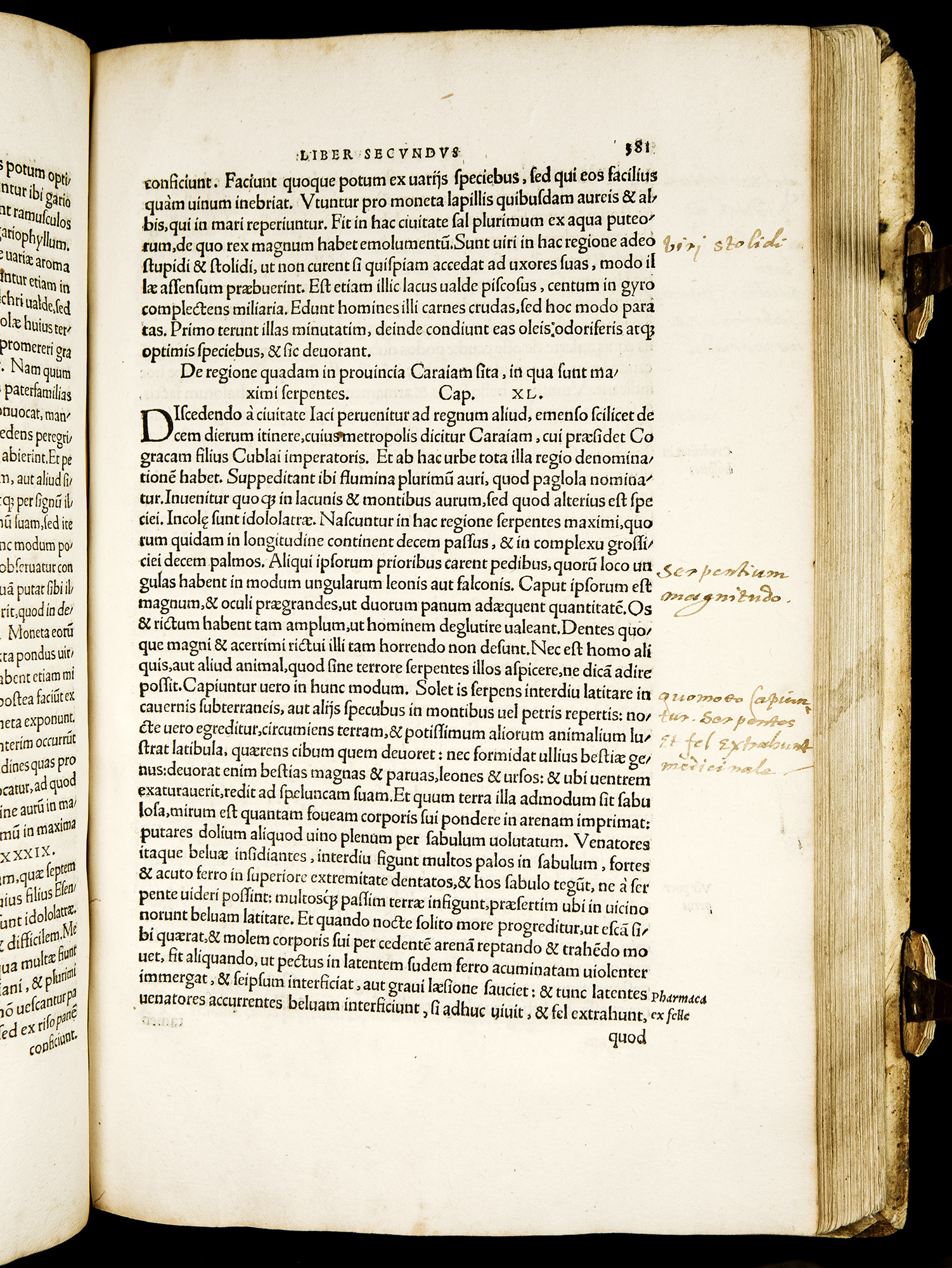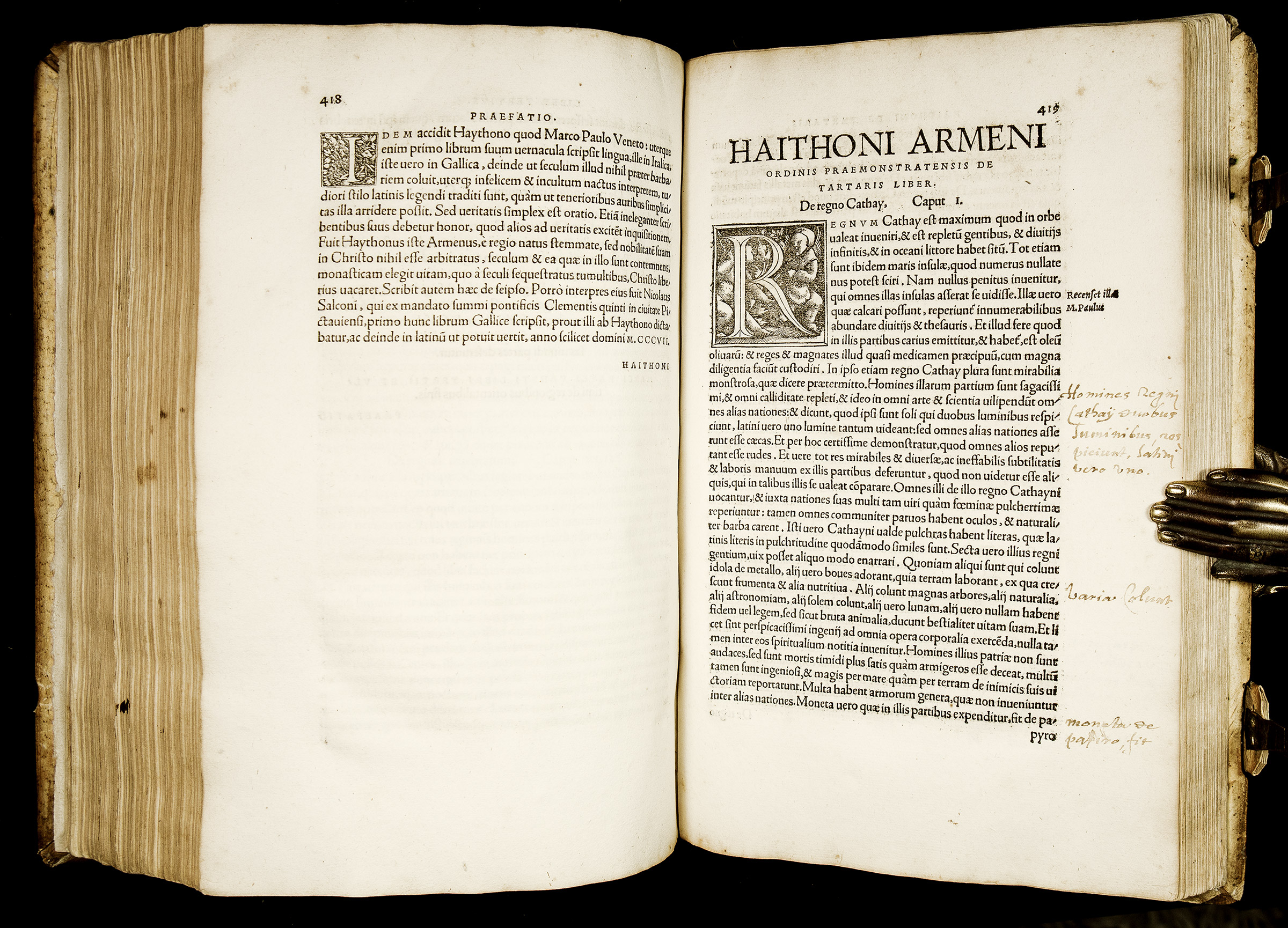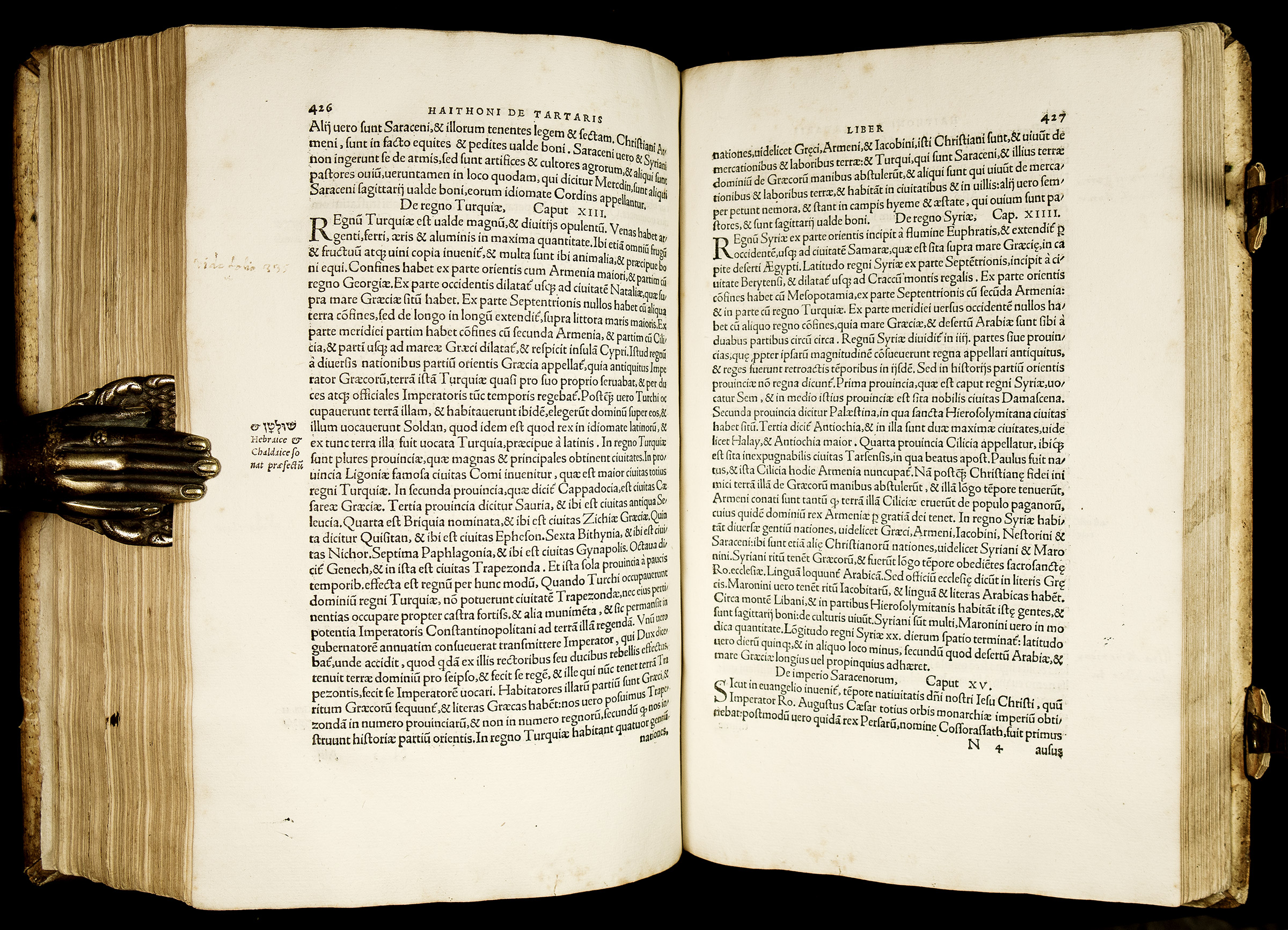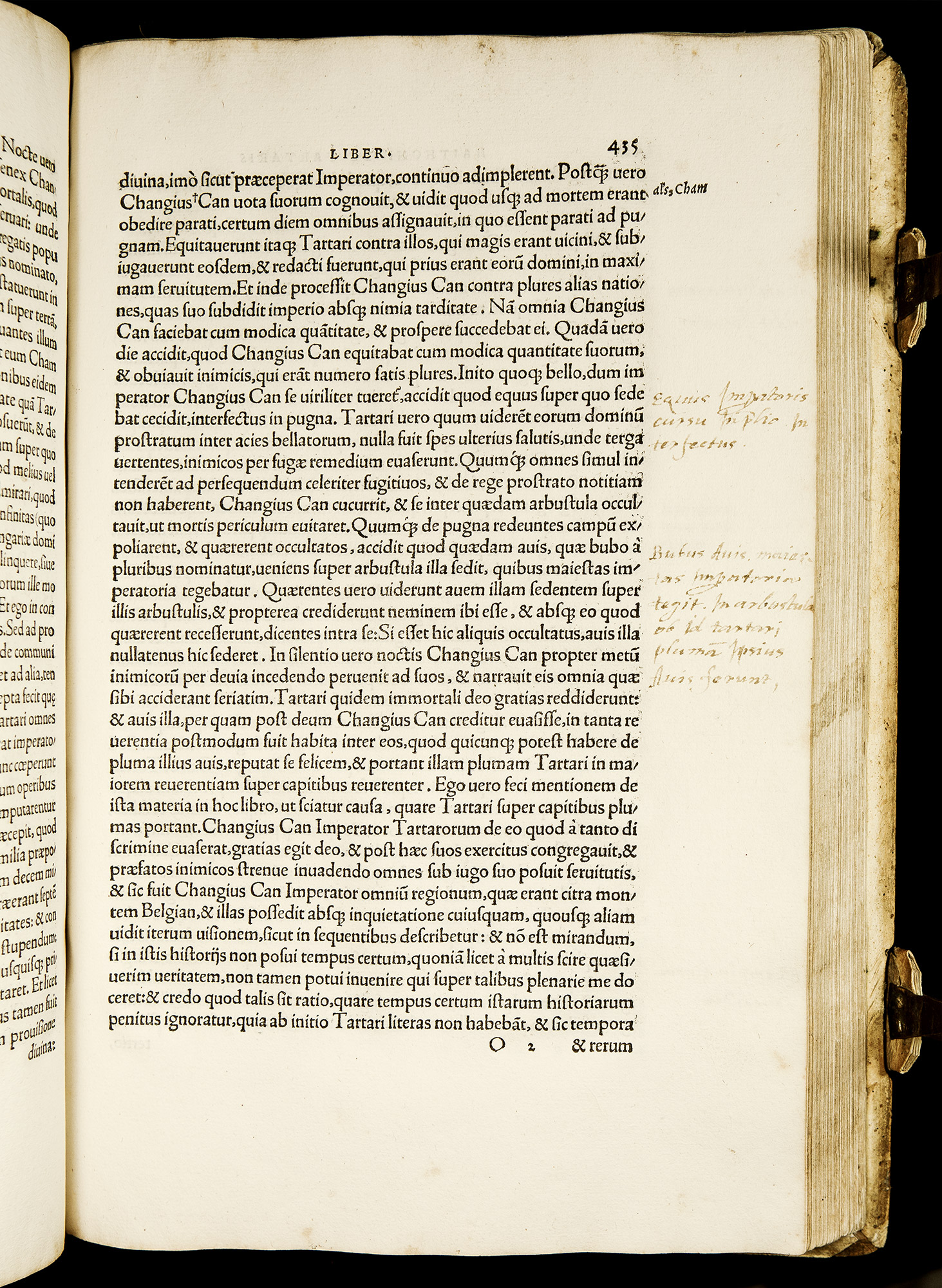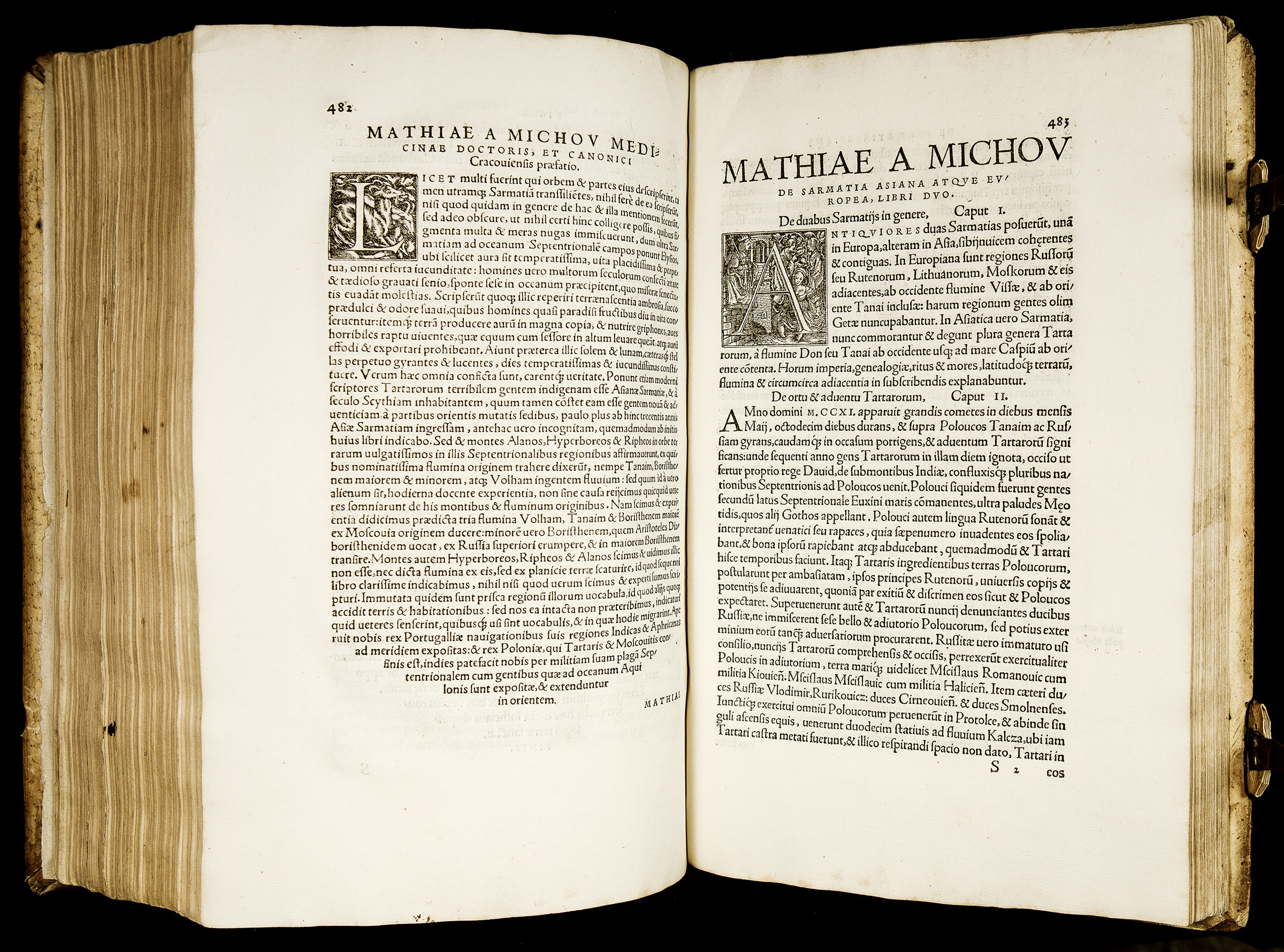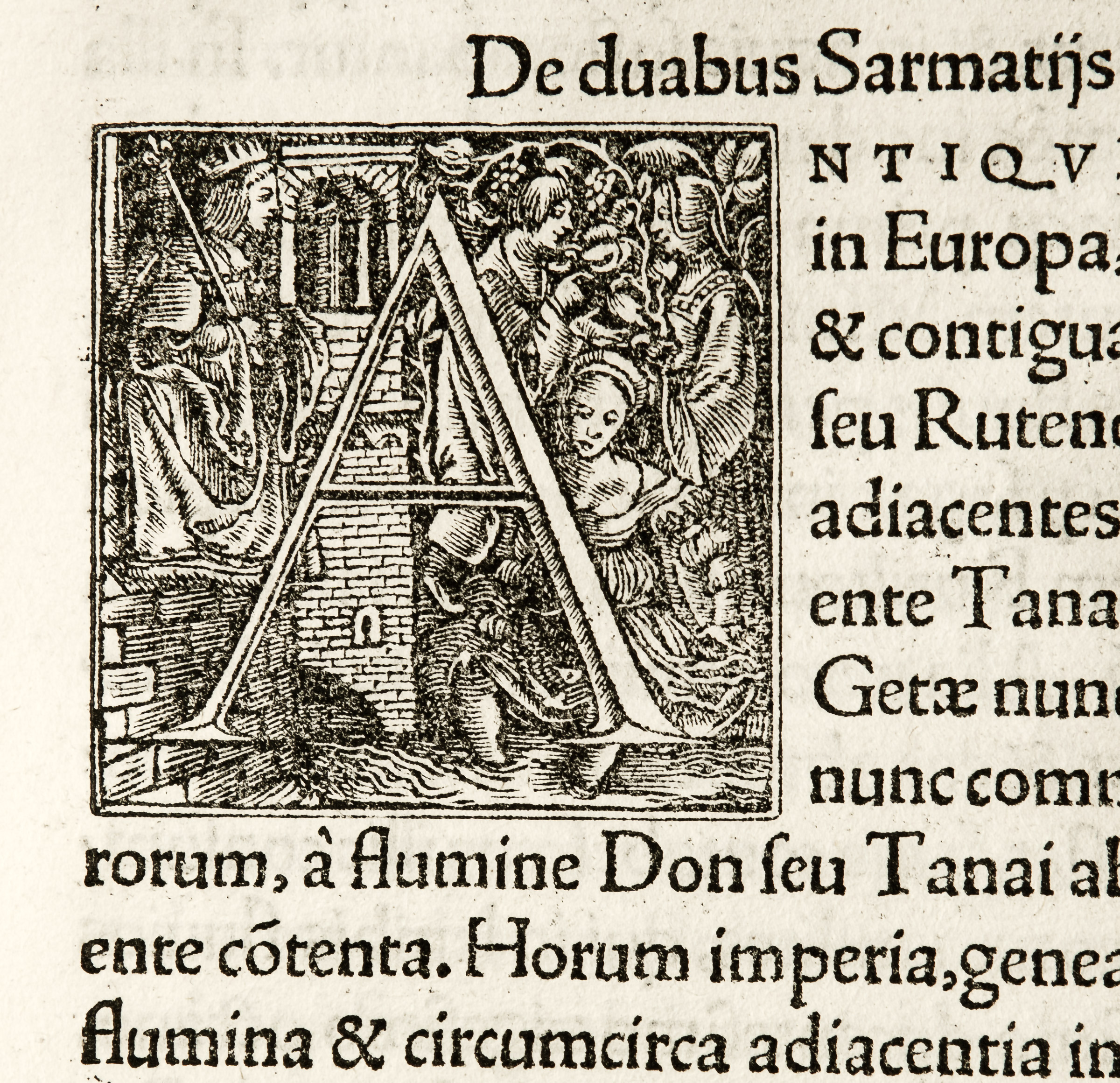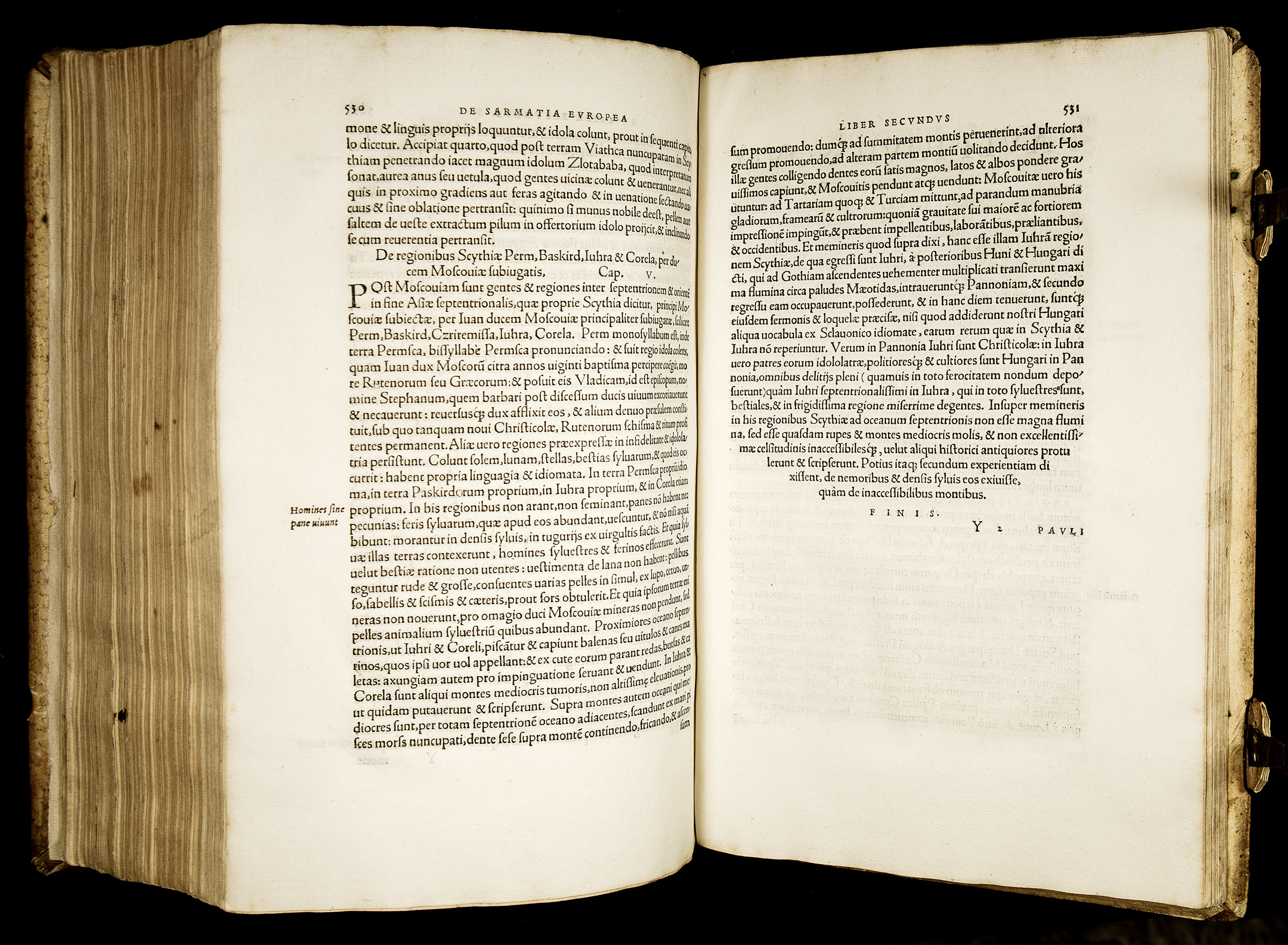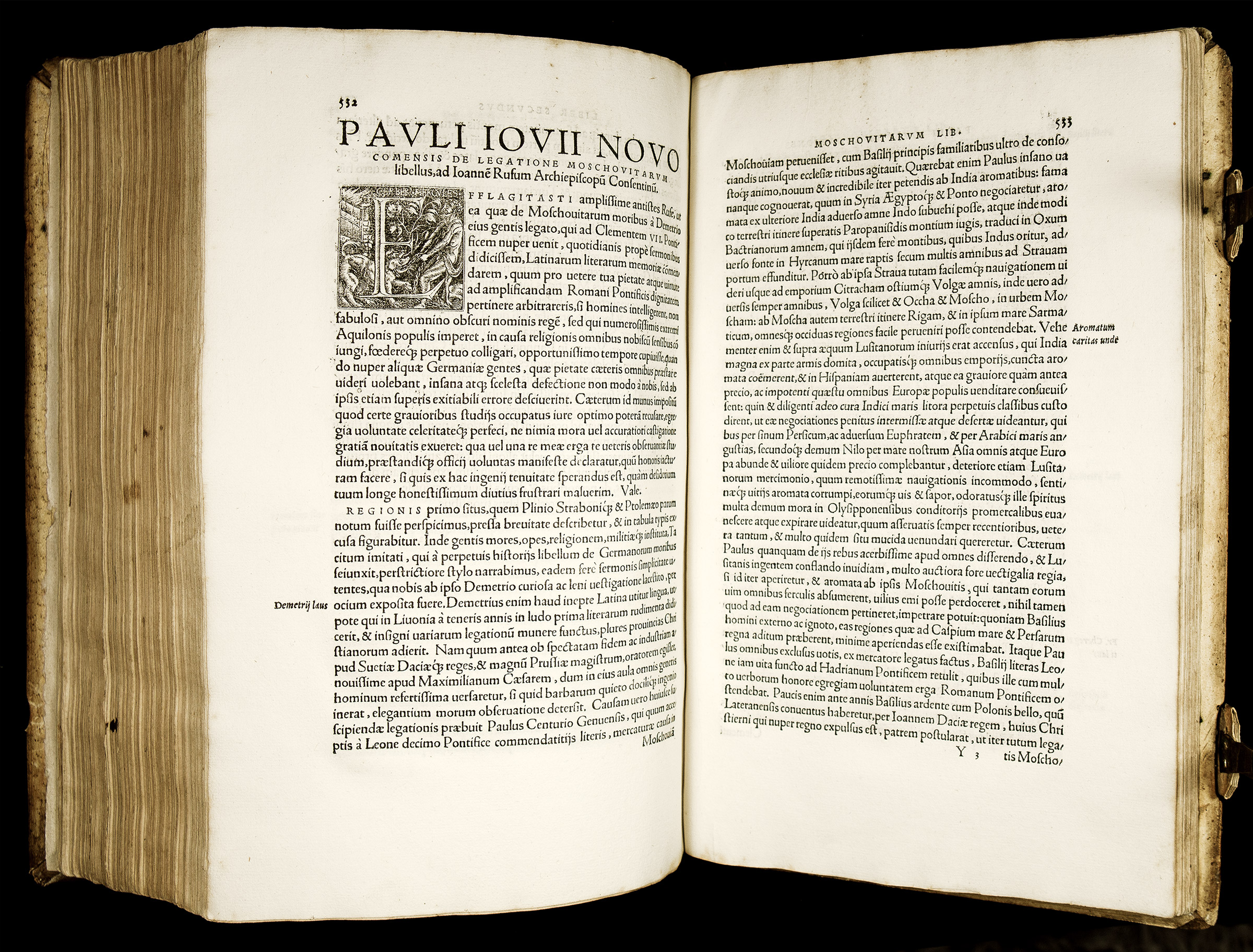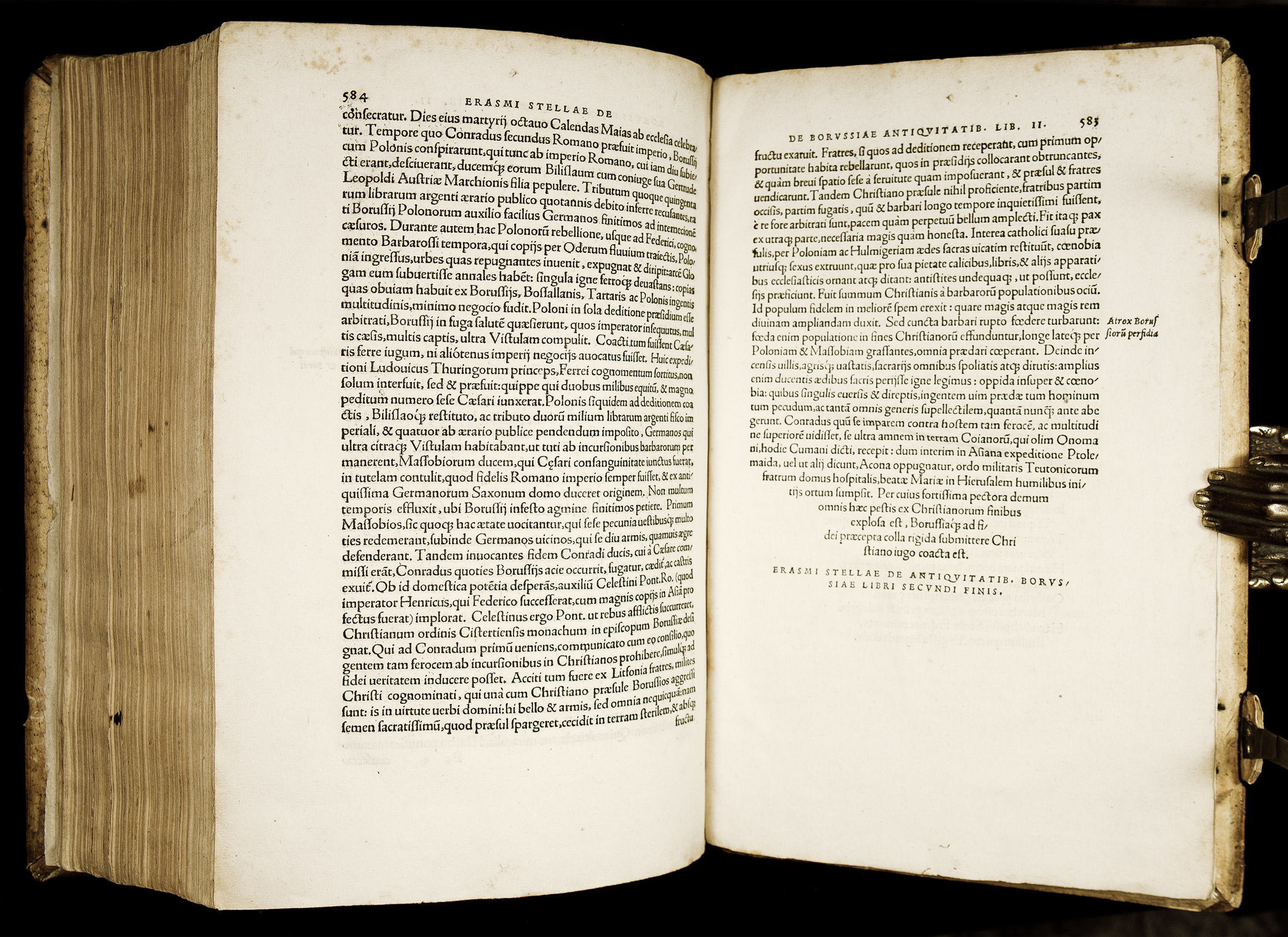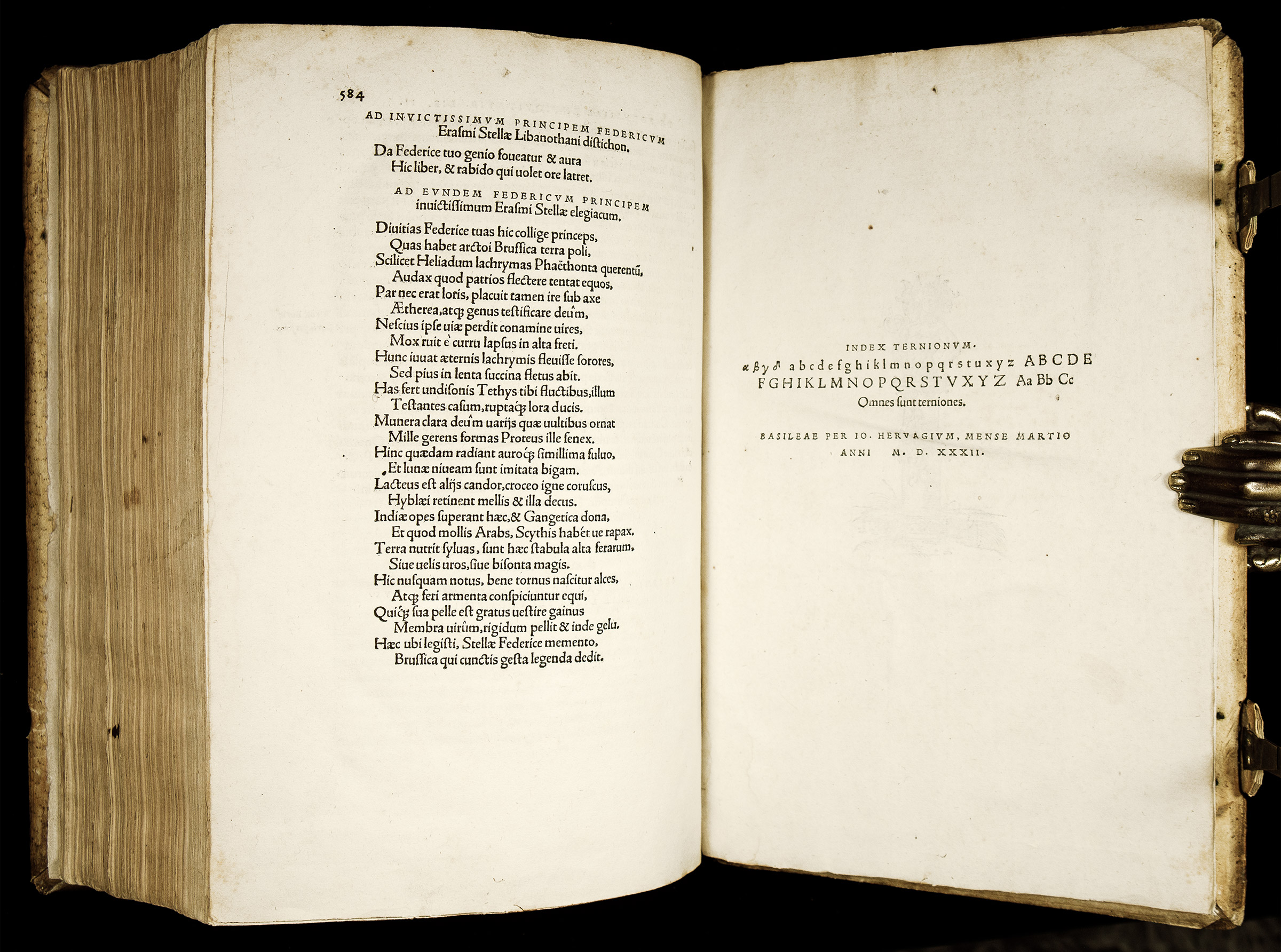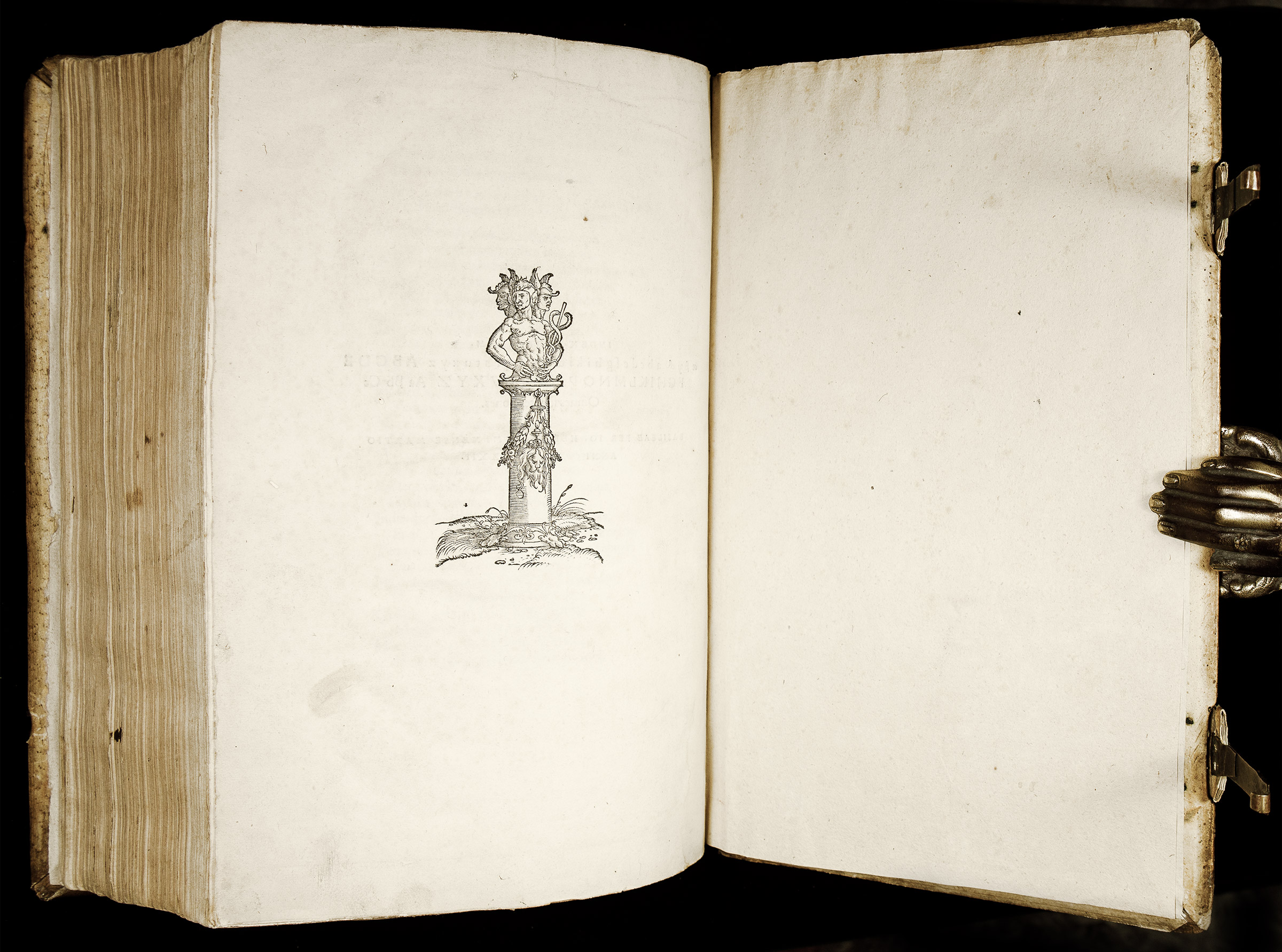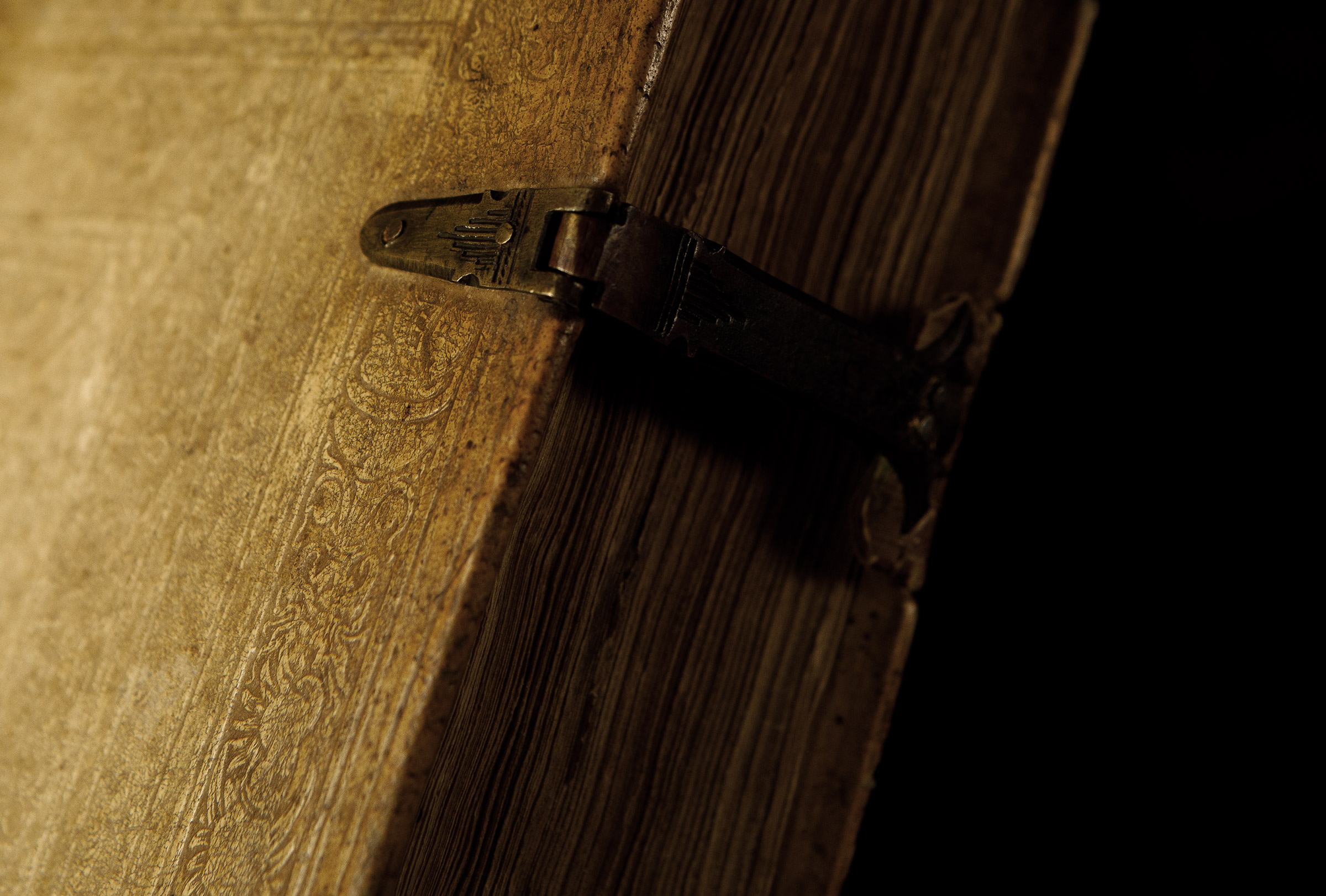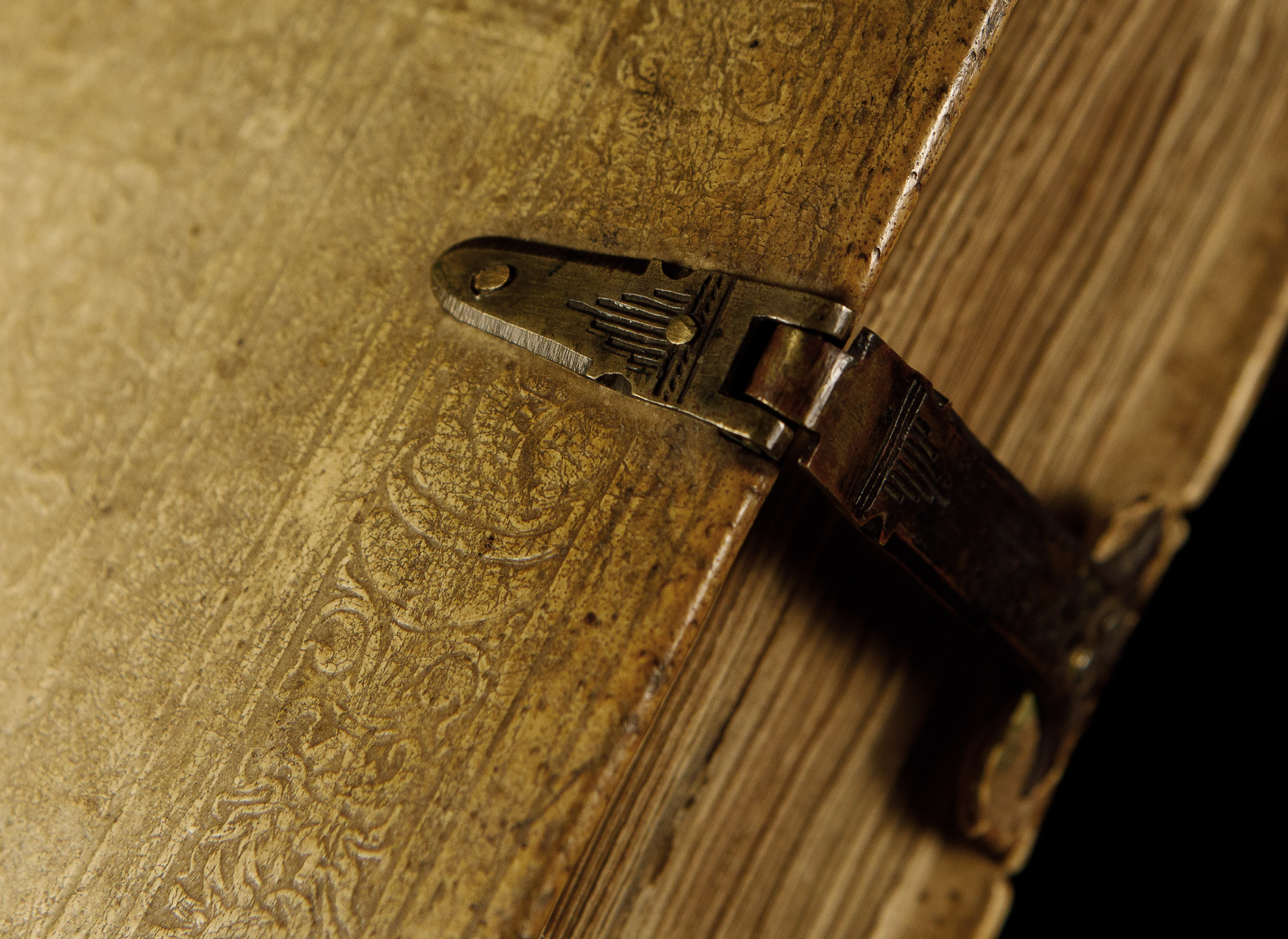
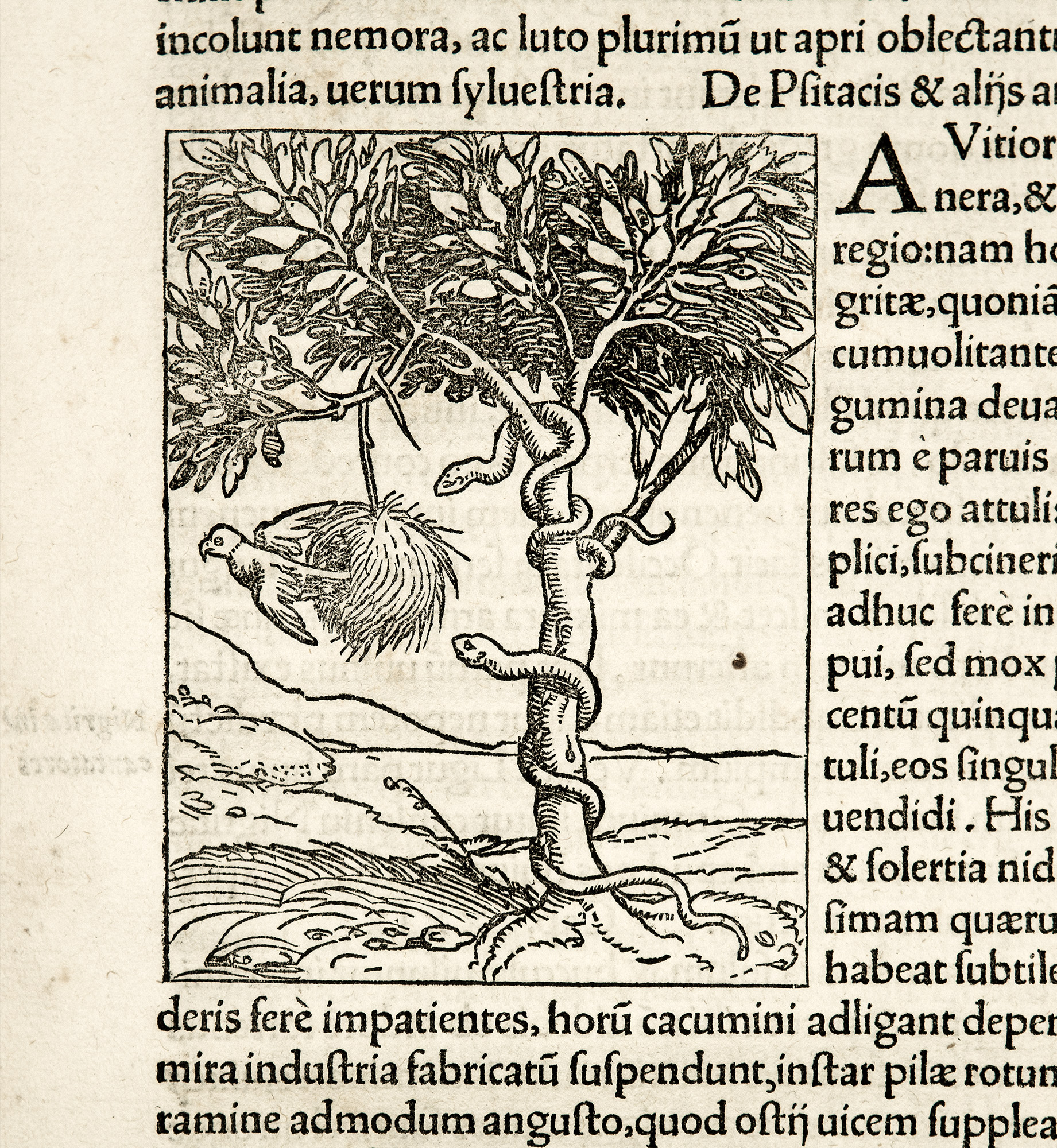
[Early Exploration & Travel] [Early Americana]
[Johannes Huttich, compiler]
Novus orbis regionum ac insularum veteribus incognitarum
(With a preface by Simon Grynaeus, and an introductory essay by Sebastian Münster.)
Printed in Basel by Johann Herwagen, March 1532.
$3,900
FIRST EDITION. Text in Latin.
Widely regarded as THE FIRST GENERAL HISTORY OF TRVELS, this fine collection of voyages including a rich selection of New World material, was compiled by Johann Huttich with a preface by Simon Grynaeus. Ours is a very pleasing wide-margined copy of this important publication, very well preserved in a fine contemporary binding (blind-stamped pigskin over wooden boards with two functional clasps), and with some neat manuscript marginalia by a 16th-century reader.
This fascinating work (whose title translates as “A New World of Lands and Islands Unknown to the Ancients”) contains the first three voyages of Columbus, the four voyages of Vespucci, an extract of the Fourth Decade of Peter Martyr, as well as the voyages of Cadamosto, Alonso Nino, Pinzón, and Cabral. Other accounts deal with the travels of Marco Polo and voyages to Africa, Russia, Palestine, the Moluccas, and elsewhere.
Our example is complete, except (as often) for the rare woodcut map ‘Typus cosmographicus universalis’ attributed to Sebastian Münster, but including the (missing in many other copies) quire δ (12 pages) containing Münster’s explanatory essay on the map (entitled "Typi Cosmographici et Declaratio et usus"). The Münster’s map is notoriously elusive and “is found in some copies of this edition but not in all the copies” (E. Rosen, Copernicus and his Successors, p.173). Apparently copies with the map used to be even rarer in 19th century, as, for instance, the authoritative catalogue Bibliotheca Grenvilliana (vol.II, p.498), listing a copy without a map, notes: “This first edition of the Novus Orbis is very desirable, and very difficult to find. The title-page announces a Map, with a description of the Map by Munster, but no map has as far as I can learn, ever been seen in this edition.”
[Please note that the preliminary quire δ with Munster’s introductory essay appears to be almost as rare as the map itself. The copy listed by Arader at $90,000 (with the map framed separately) is “lacking quire [delta] with Münster's notes to the map”.]
“The edition was published in March 1532, in Basel by the printer Johannes Herwagen. He had received a batch of travel narratives that had been collected by Johannes Huttich. The job of editing the volume was entrusted to an experienced scholar, Simon Grynaeus […]. The narratives selected as worth reprinting included such popular writers as Marco Polo, Vespucci and Columbus. Vicente Yáñez Pinzón, who had been the captain of Columbus' [ship] Niña, reported on Brazil; Alvise de Cadomosto on West Africa; Lodovico di Varthema on Arabia and India. From Peter Martyr's history of the New World, the volume took its title Novus Orbis. It included many other travel accounts, too numerous to be itemized here.” (Rosen, ibid).
The core of the Novus orbis was formed by the accounts which had appeared in an earlier Italian collection of voyages compiled by Fracanzano da Montalboddo and first printed in Vicenza in 1507 as Paesi Novamente Retrovati then the following year in Milan in Latin translation by the Milanese monk, Archangelo Madrignano. In addition to the accounts of the exploration of the Americas, it contained important accounts of voyages in Africa and Asia. Montalboddo’s collection has been described as "the most important vehicle for the dissemination throughout Renaissance Europe of the news of the great discoveries both in the East and the West" (PMM).
Montalboddo’s collection included accounts of Cadamosto's voyage to Cape Verde and Senegal, Pedro de Cintra's voyage to Senegal, Vasco da Gama's voyage to India, Pedro Alvares Cabral's voyage to India and his DISCOVERY OF BRAZIL, descriptions of Columbus's first three voyages and those of Alonso Niño and Pinzón, Giocondo's version of Vespucci's letter to Lorenzo de' Medici about his third voyage, the peace treaty between the Kings of Portugal and Calicut, letters on João da Nova's expedition and that of Gaspar Cortereal, the narrative by José Indio, the King of Portugal's letter to Pope Julius II about the Asian discoveries, and more.
This group of travel narratives formed the basis of the Novus orbis, which, however, expanded upon them considerably, adding at least ten further accounts, including:
The compiler of this collection, Johann Huttich (1480?-1544) was German humanist historian, antiquarian and numismatist. Born in Mainz, he became a citizen of Strasbourg in 1521, where he was canon to St. Thomas. Huttich was a friend of Ulrich von Hutten and Beatus Renanus and a follower of Johannes Reuchlin. The author of the preface to this collection, Simon Grynaeus (1493–1541), a notable German classical scholar and historian, was a student of Melanchthon’s at Pforzheim. He is perhaps best known for finding and editing the first five books of Livy’s history of Rome (1531) that would be published by Erasmus.
Physical description:
Folio; textblock measures 30.5 cm x 20 cm. Bound in 16th-century German or Swiss blind-stamped pigskin over wooden boards (covers paneled with concentric rolled borders of mostly floral ornamental motifs), with two (functional) brass clasps.
Pagination: [48], 584 (i.e. 586); [2] (register, printer’s device (a triple Herm)).
Signatures: α-δ6 a-z6 A-Cc6.
Without the folding woodcut map, otherwise complete, including the (often missing) quire δ (six leaves) containing Sebastian Münster’s essay on the map ("Typi Cosmographici et Declaratio et usus").
Woodcut printer’s mark to title page and to verso of the final leaf. Woodcut text illustrations on pages 30 and 129, and three simple diagrams of constellations (for use in navigations); several fine woodcut historiated initials, some by Hans Holbein.
Text printed in Roman type, in single column; printed marginalia in Italic. Occasional use of Greek and Hebrew types.
Preliminaries include a list of contents (on verso of title, α1v), followed by a dedicatory preface by Simon Grynaeus addressed to Georg Danstetter (α2r-3r), an extensive Index (α3v-γ6v), and an explanatory essay on the map by Sebastian Münster (δ1r-6v).
At the end of the volume is a laudatory poem by Erasmus Stella (Cc5v), Register & Colophon (Cc6r) and Herwagen’s woodcut device (Cc6v).
Bibliographic references:
Adams G-1334; Sabin 34100; Alden & Landis 532/17; Harrisse 171, Adams G-1334; Shirley 67; John Carter Brown I, p. 104; Borba de Moraes, pp.376-377; Western Travellers in China 4.
Provenance:
Numerous interesting marginal notes in Latin in a neat 16th-century humanist hand.
Condition:
Very Good antiquarian condition. Complete, except for the rare folding map (probably excised at an early date, with a 1/2”-wide blank stub from it (?) visible between δ6 and a1); Münster’s explanatory essay on the map present. Textblock with occasional light soiling, some minor spotting, several marginal manuscript notes in a neat 16th-century hand. Some very faint marginal water-stain to top inner corner in the beginning of the volume. Title-page with a harmless short closed marginal tear (at top of the gutter). Binding somewhat rubbed, with some edge-wear, and some chipping to top fore-corners. In all, a very pleasing, solid, wide-margined example well preserved in an attractive Renaissance binding with functional clasps.
